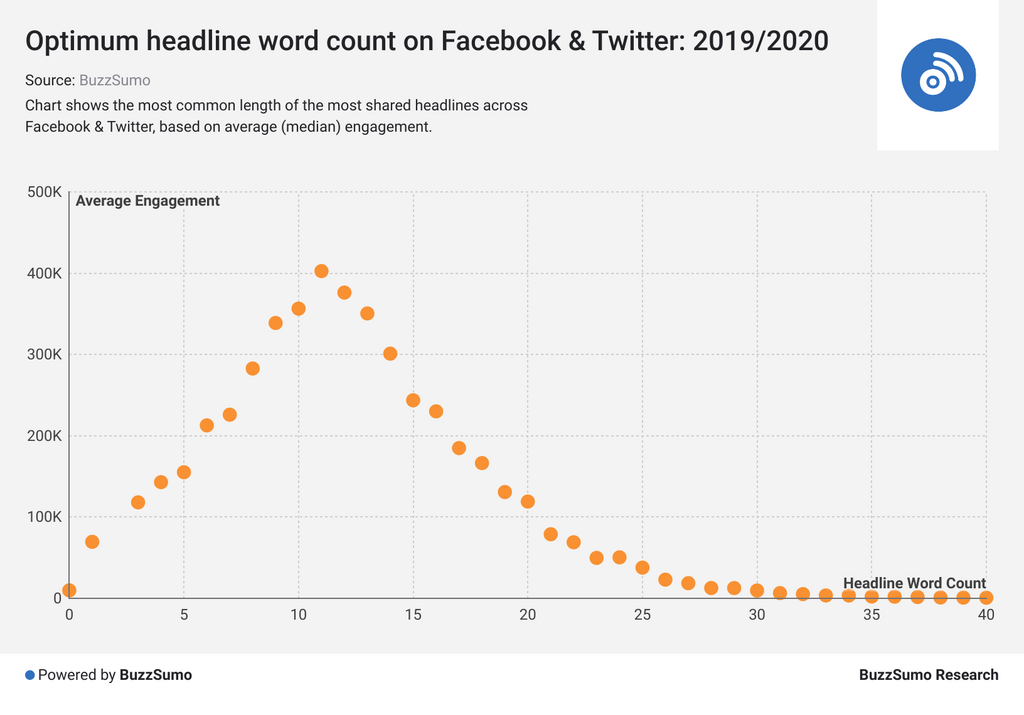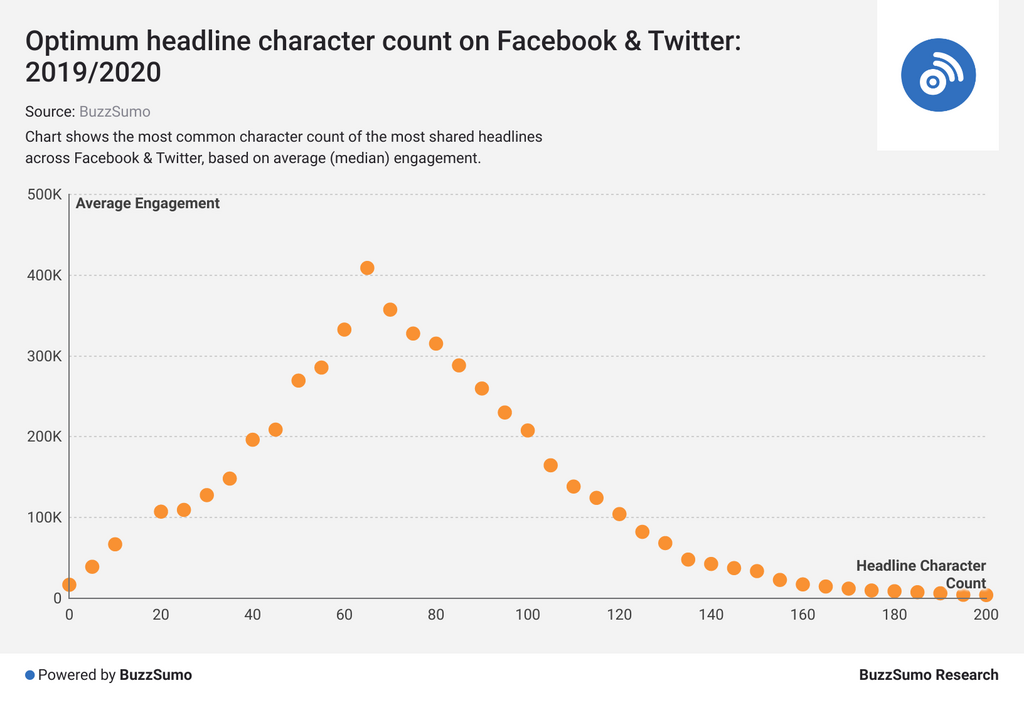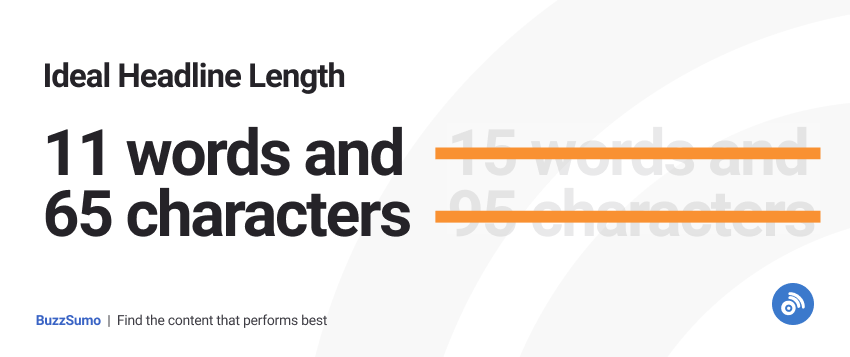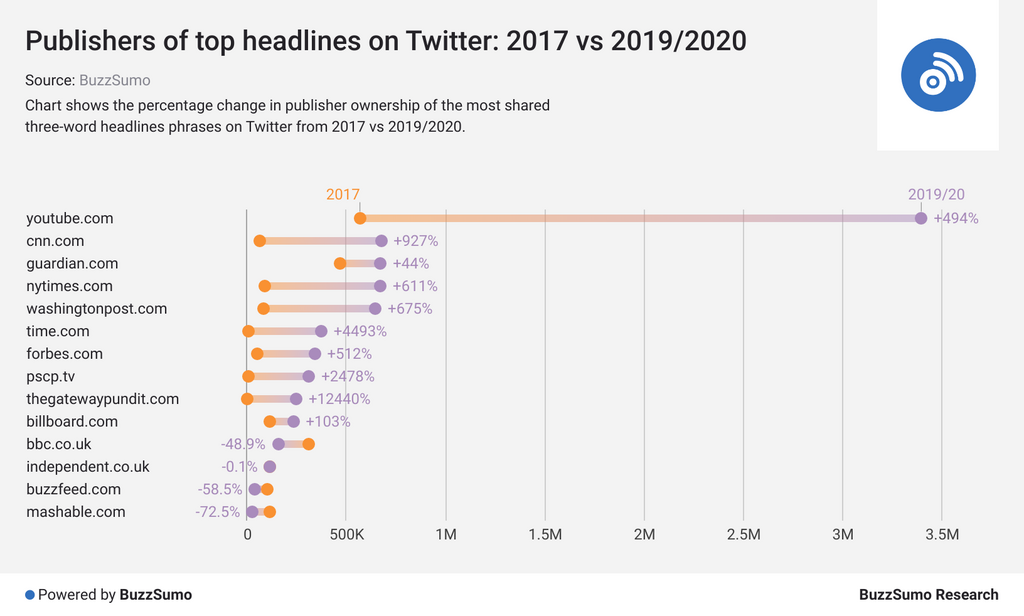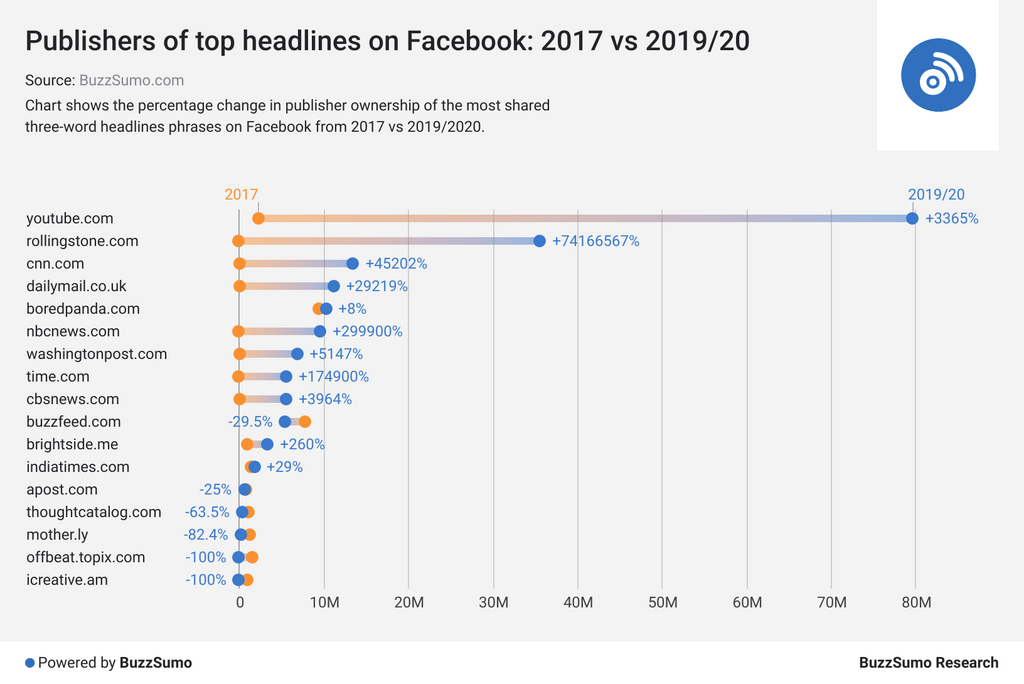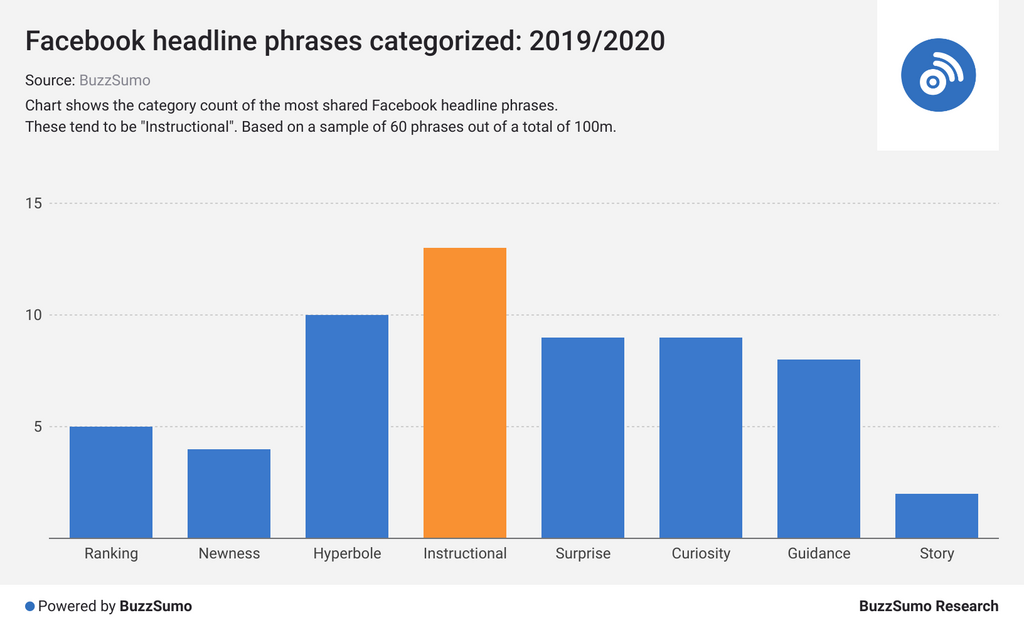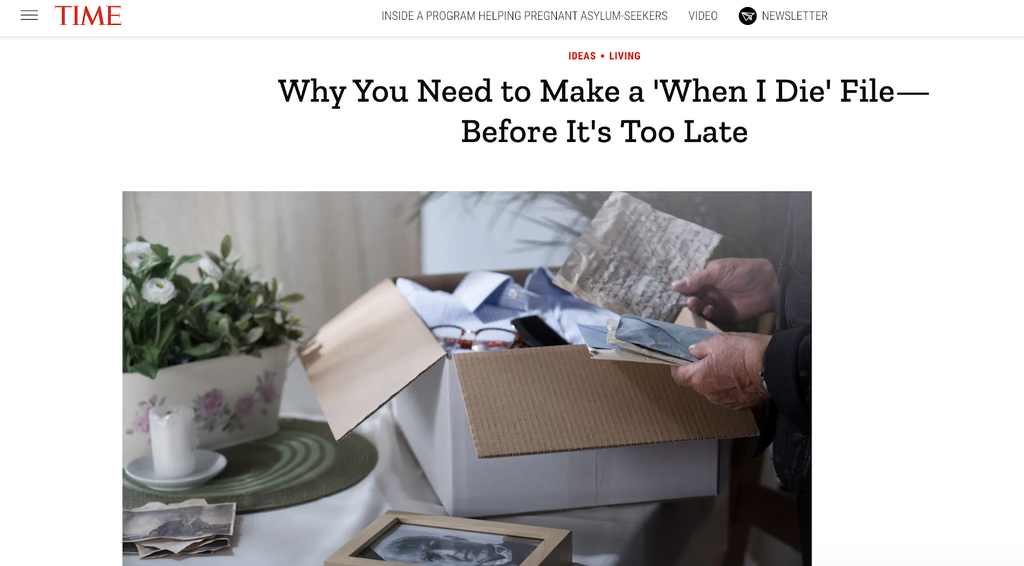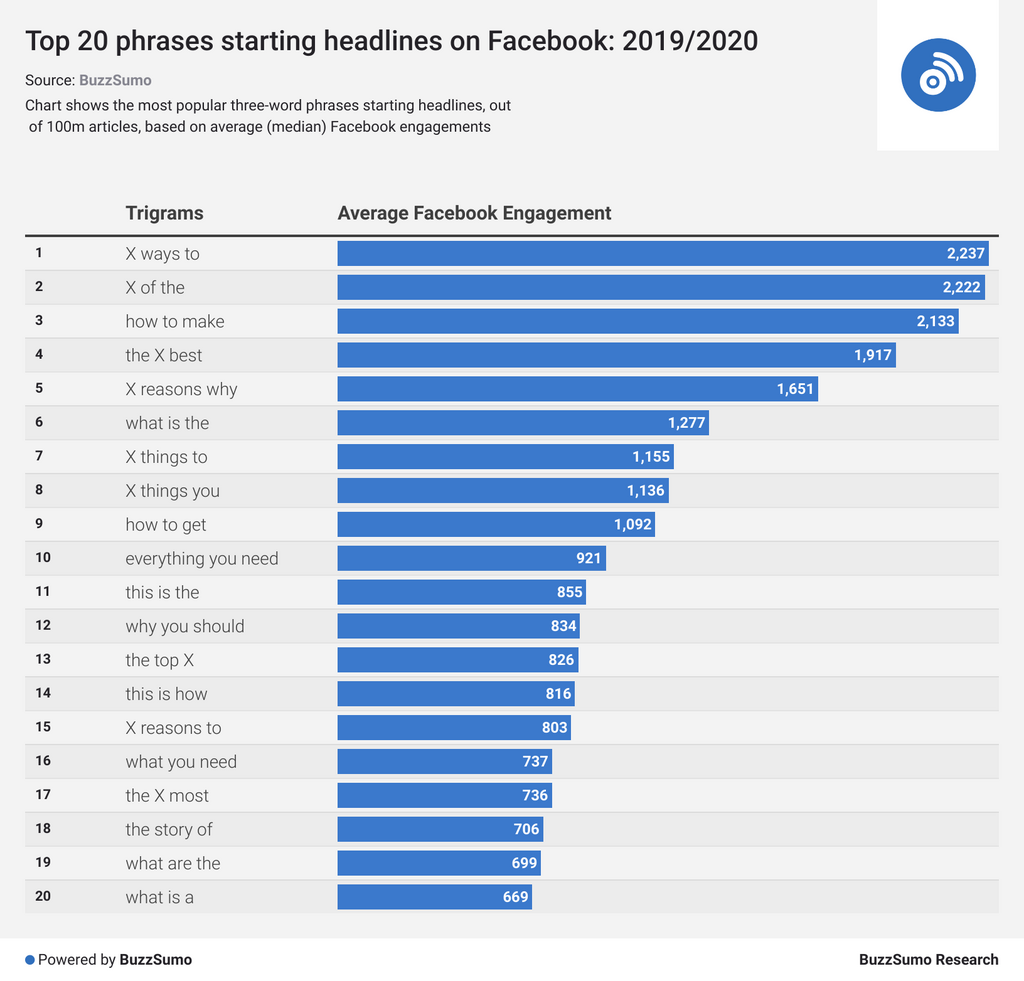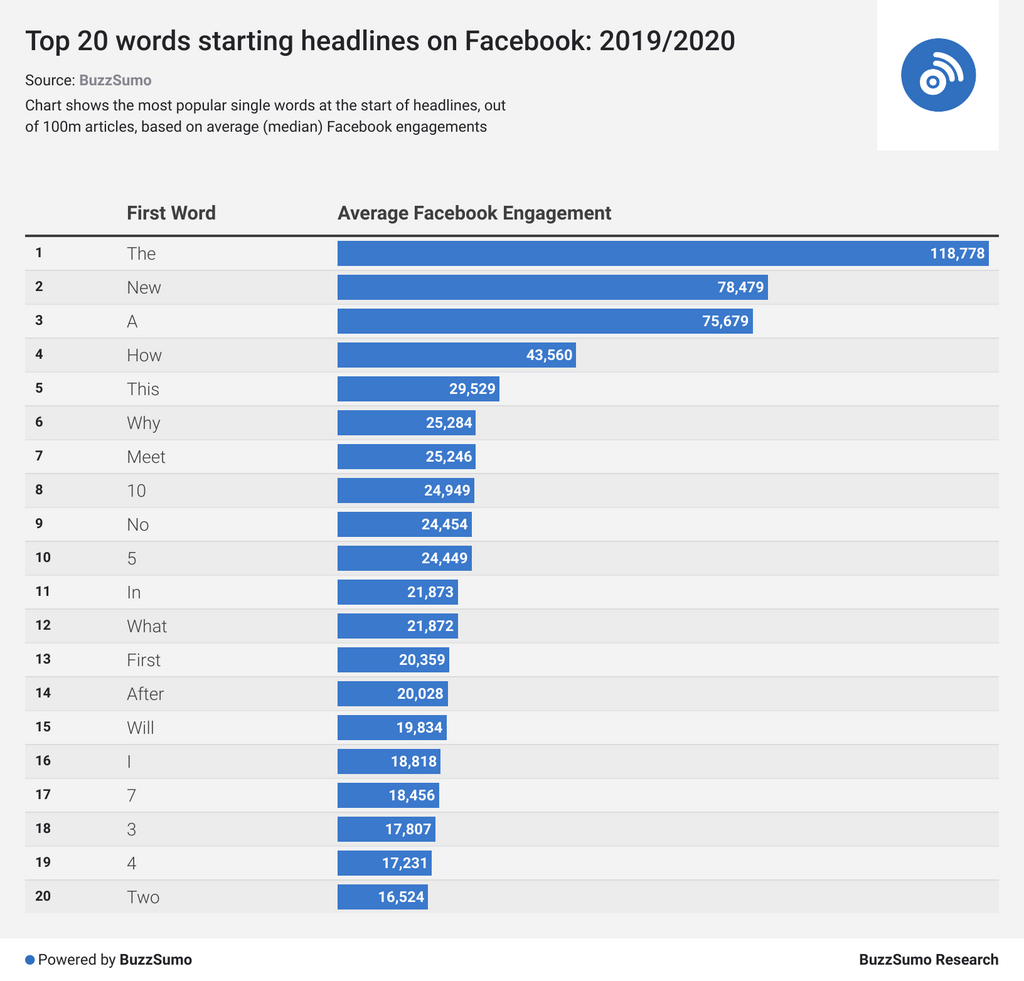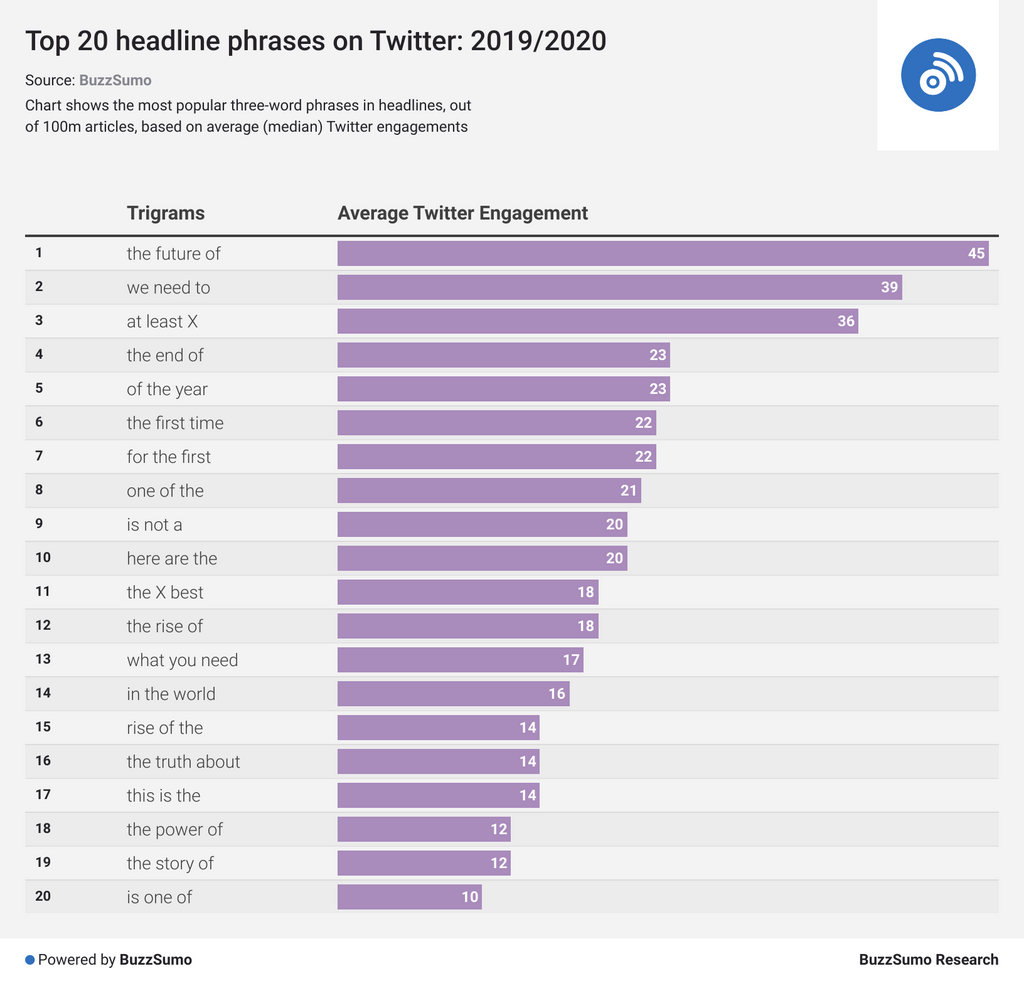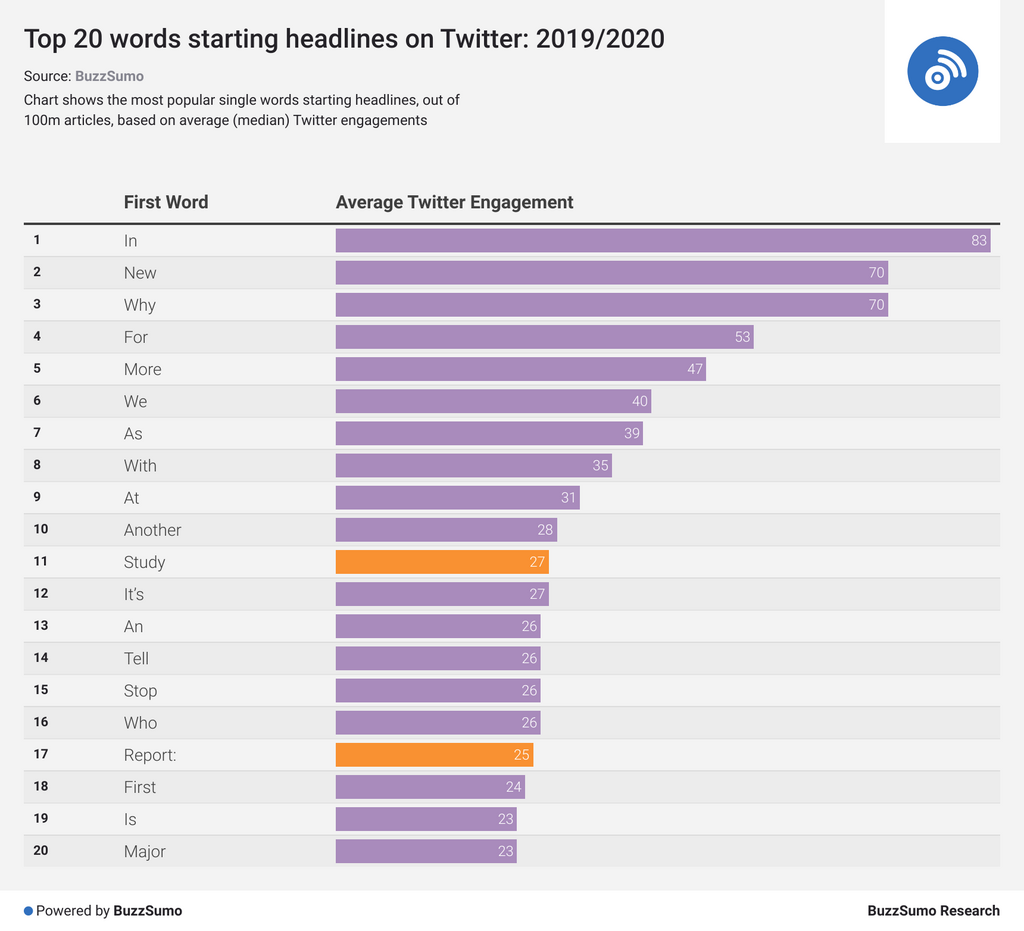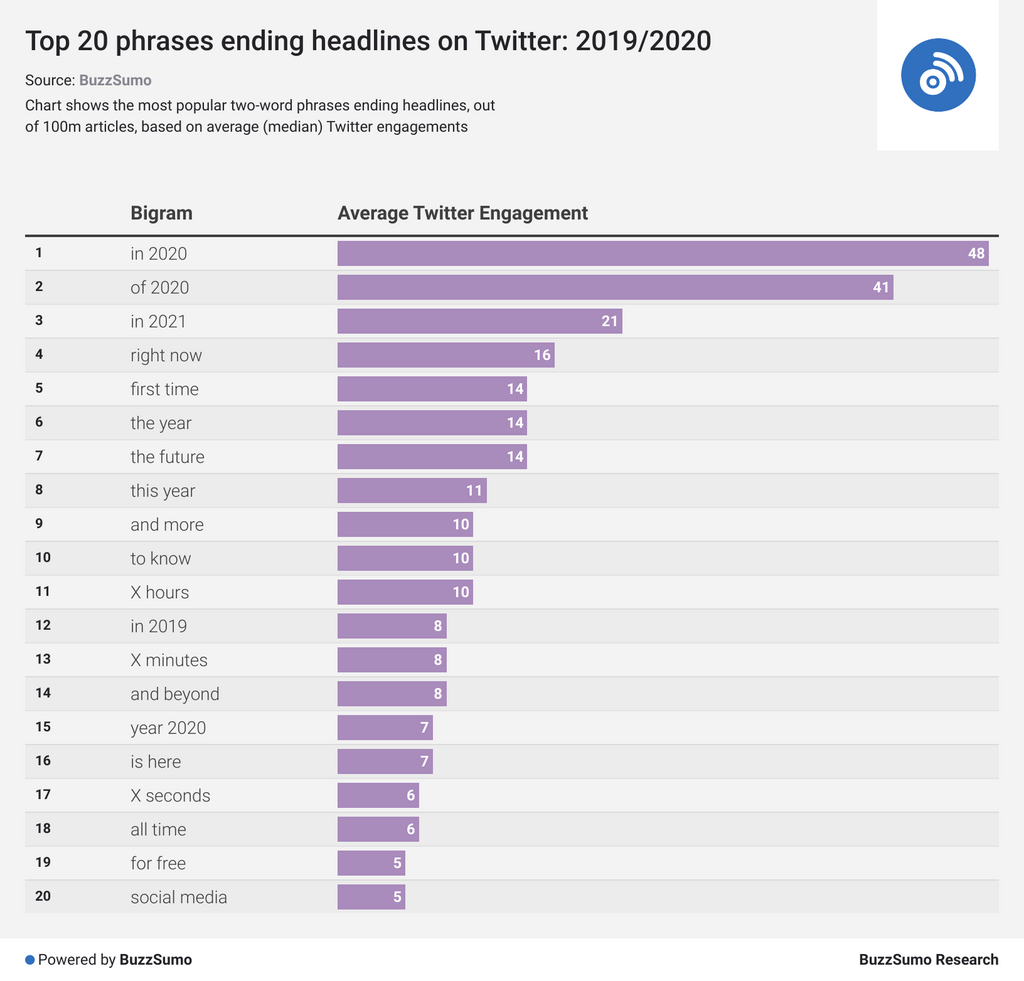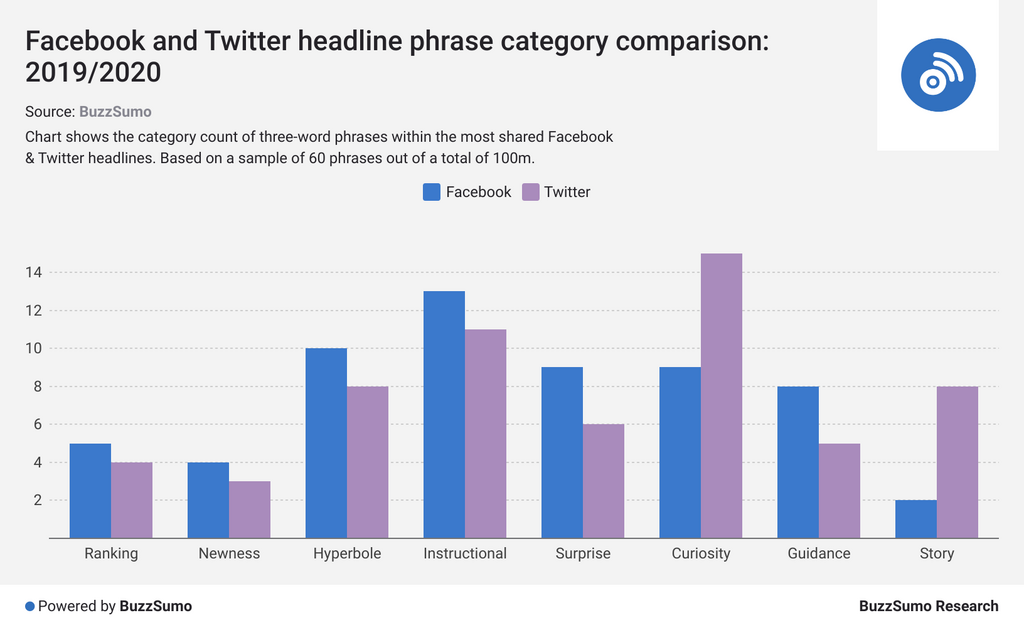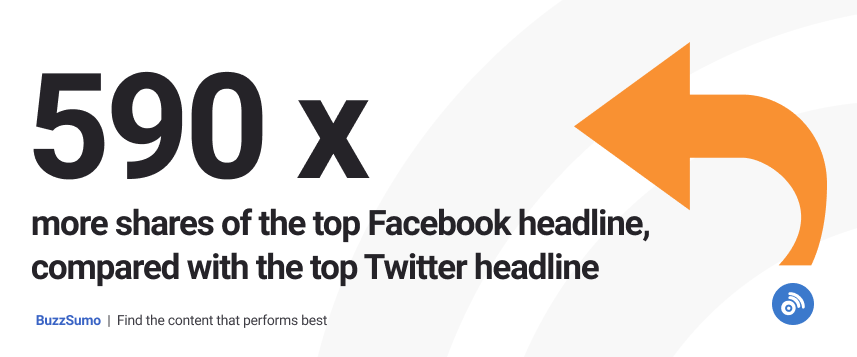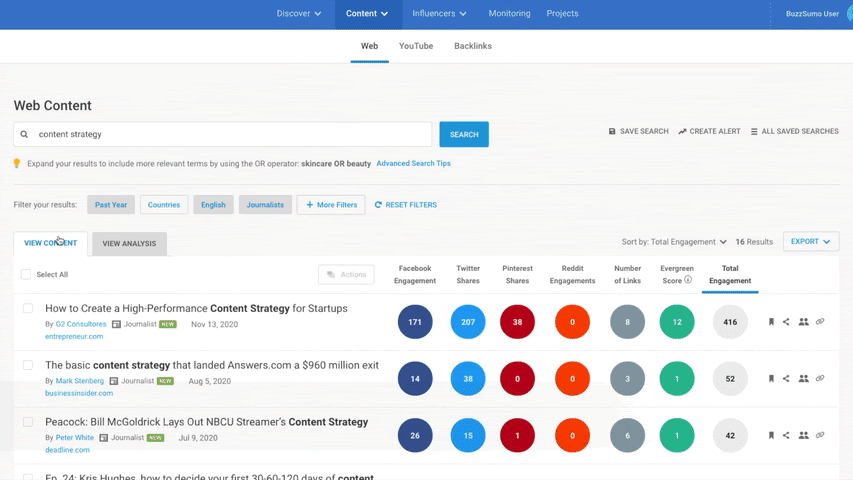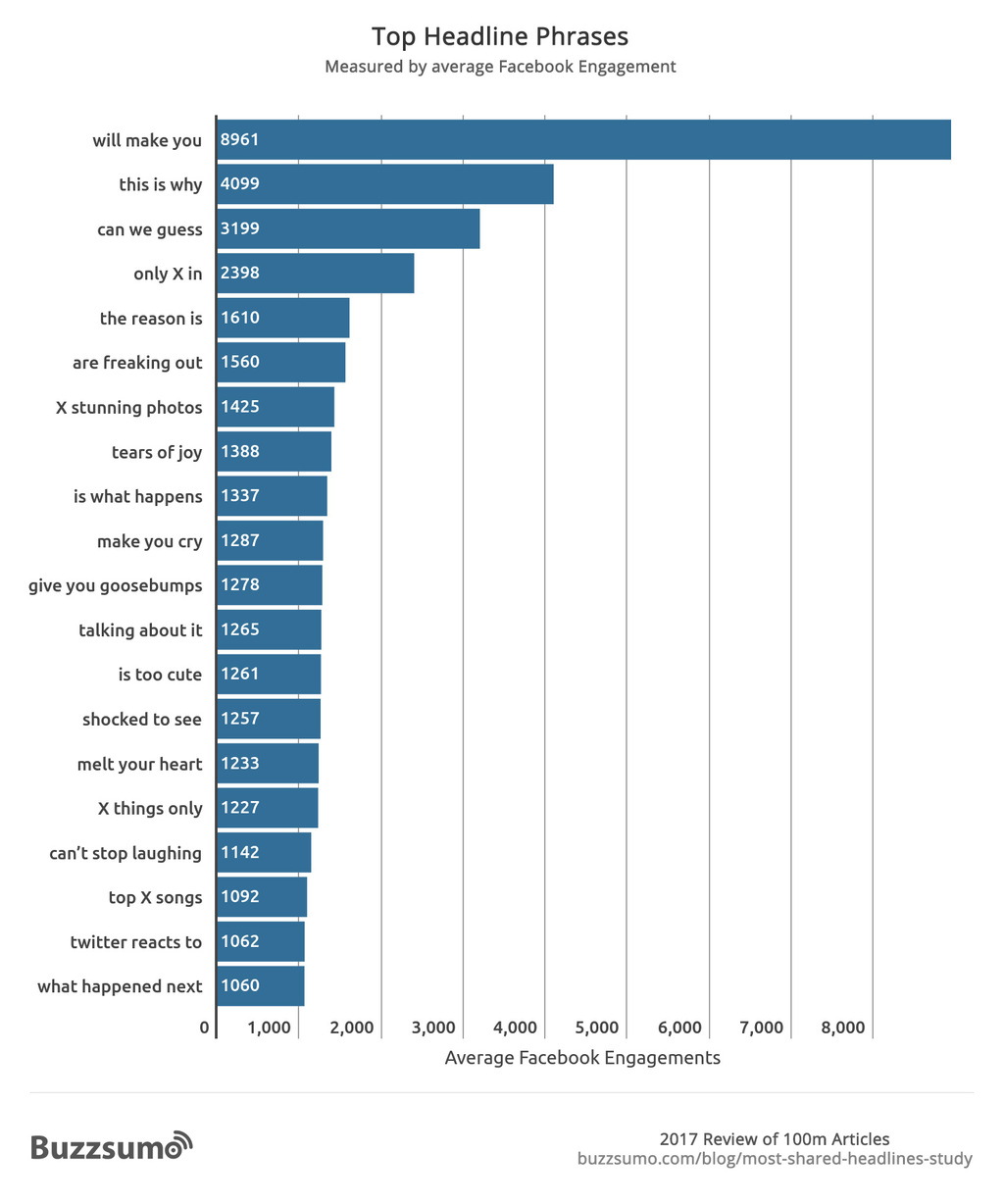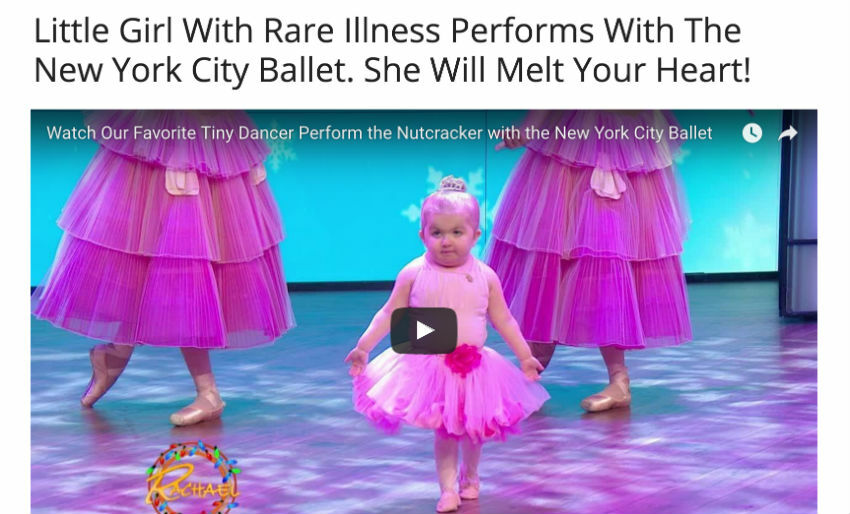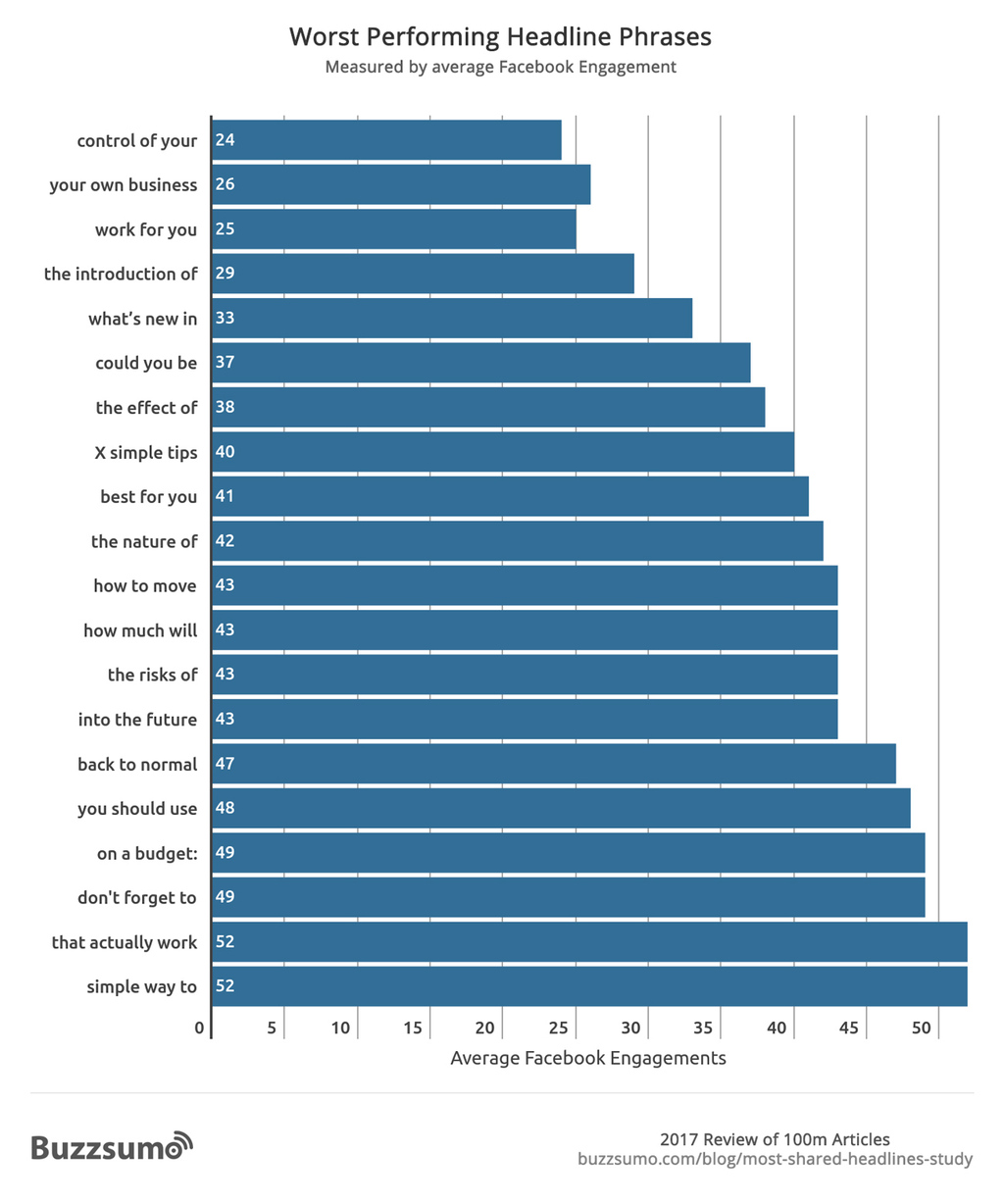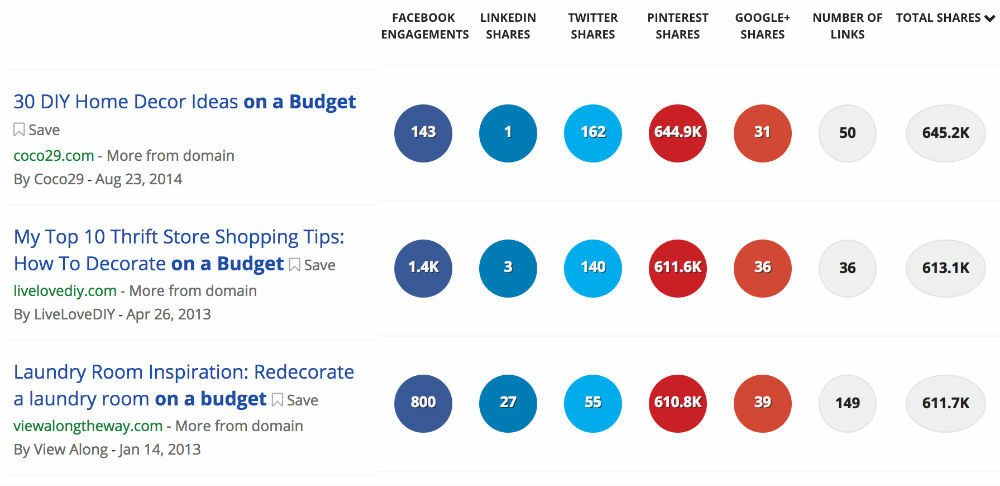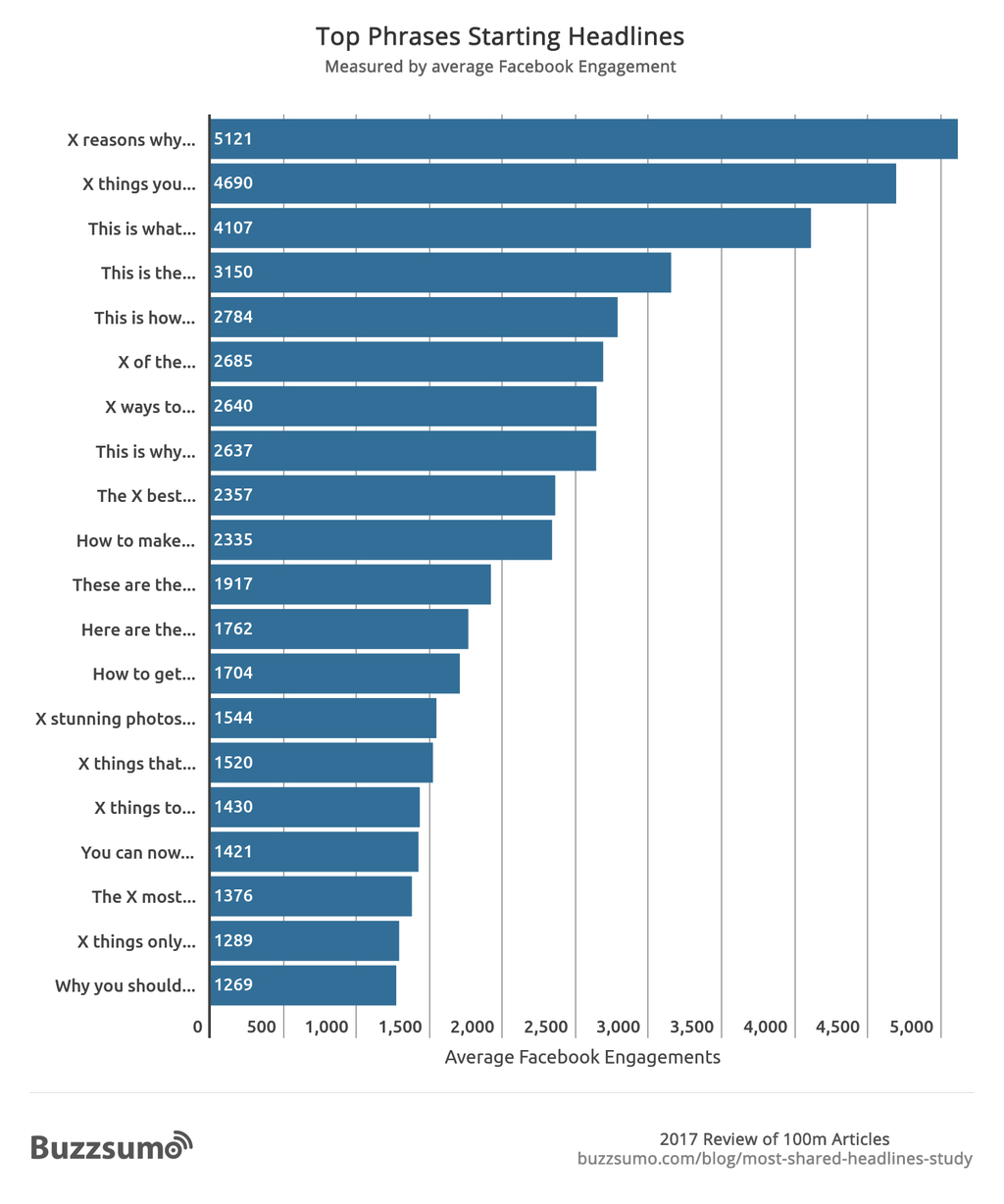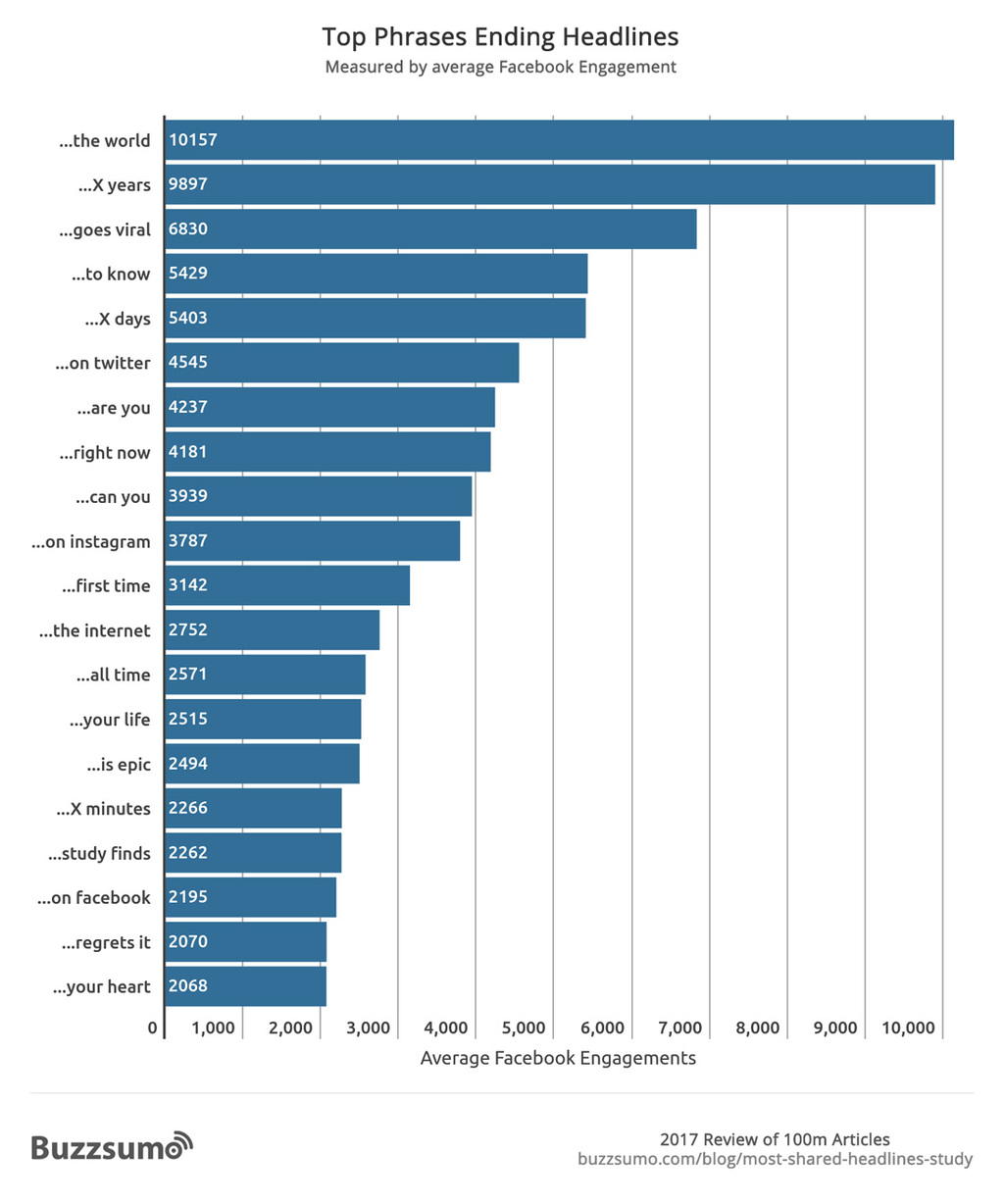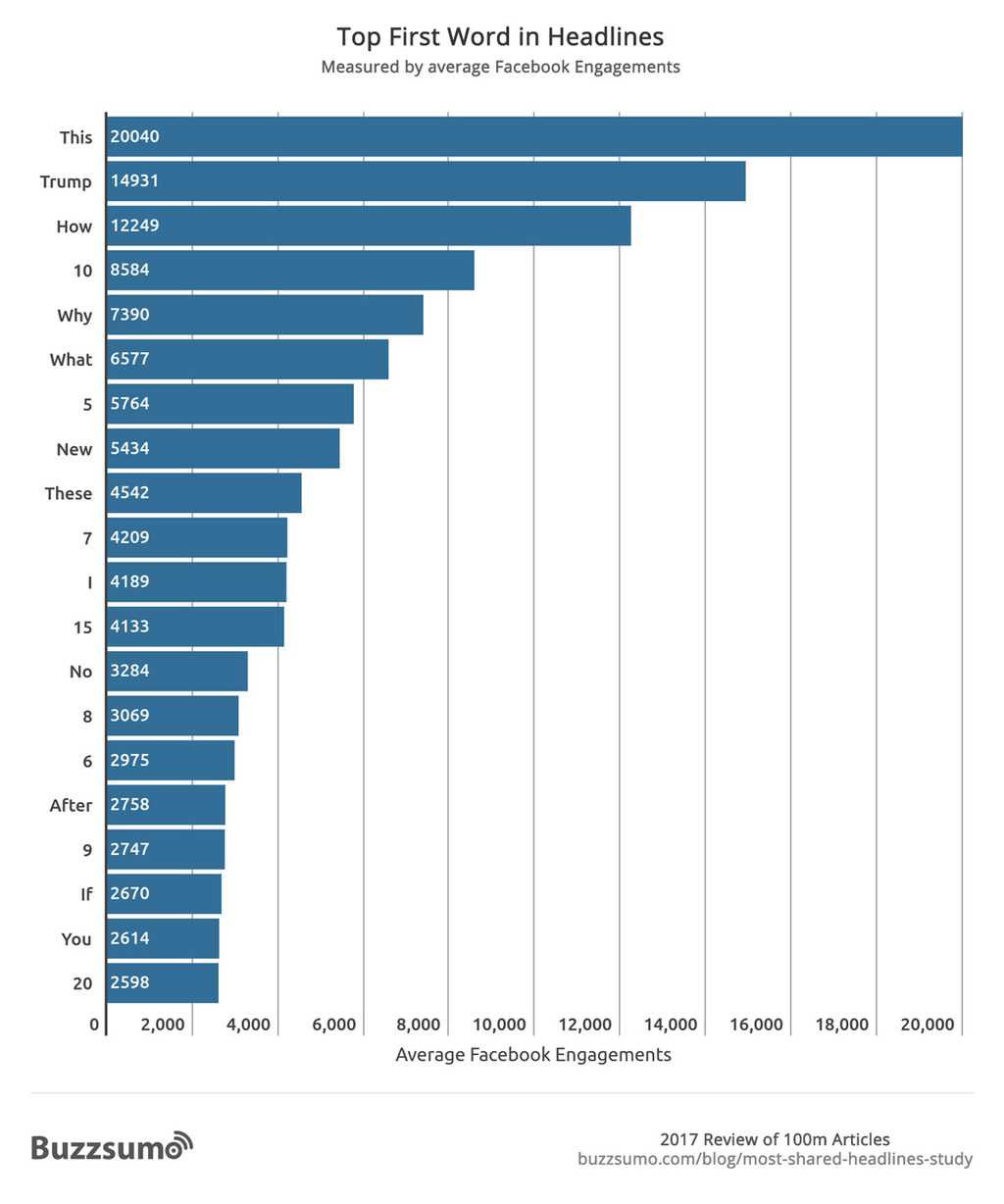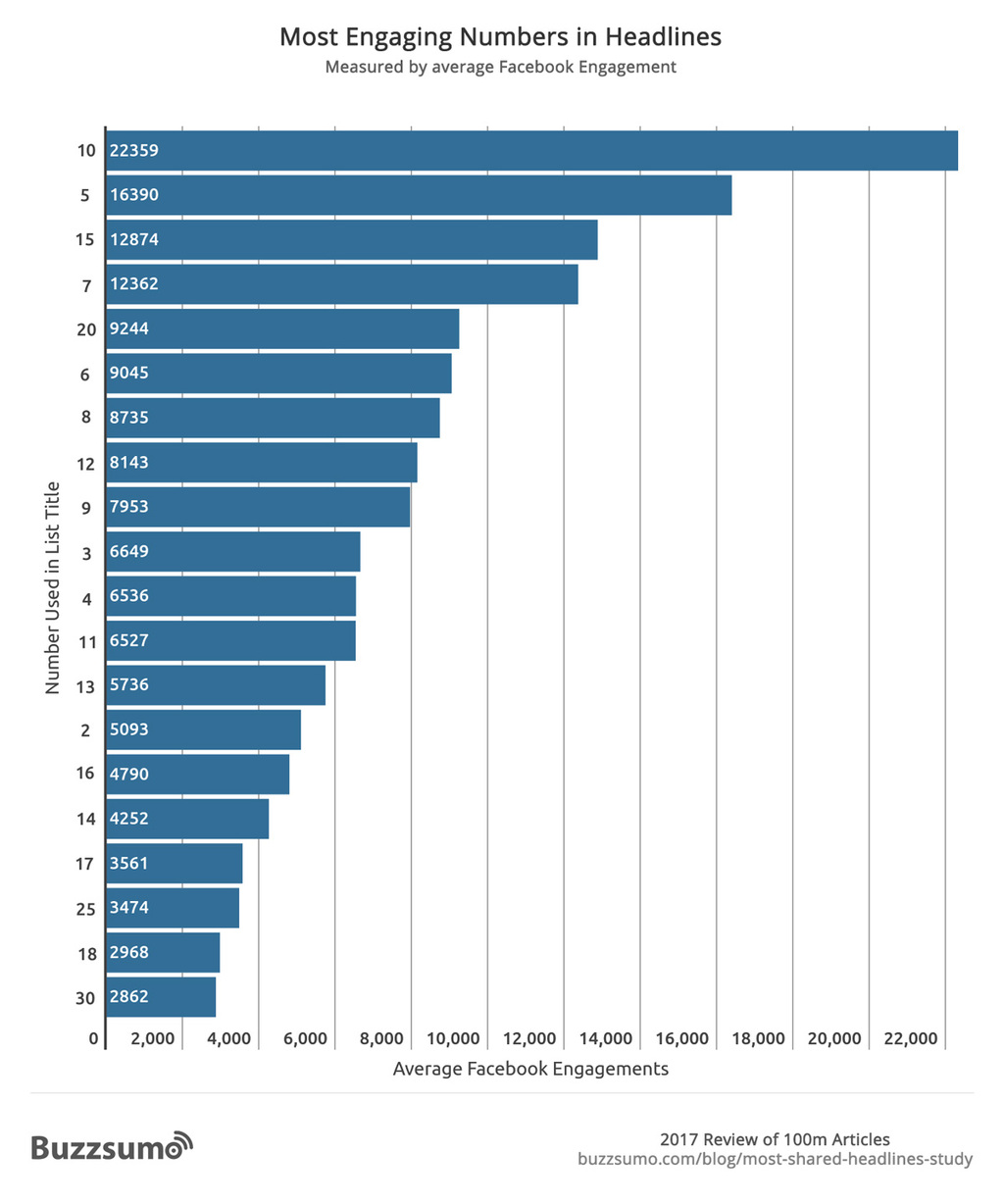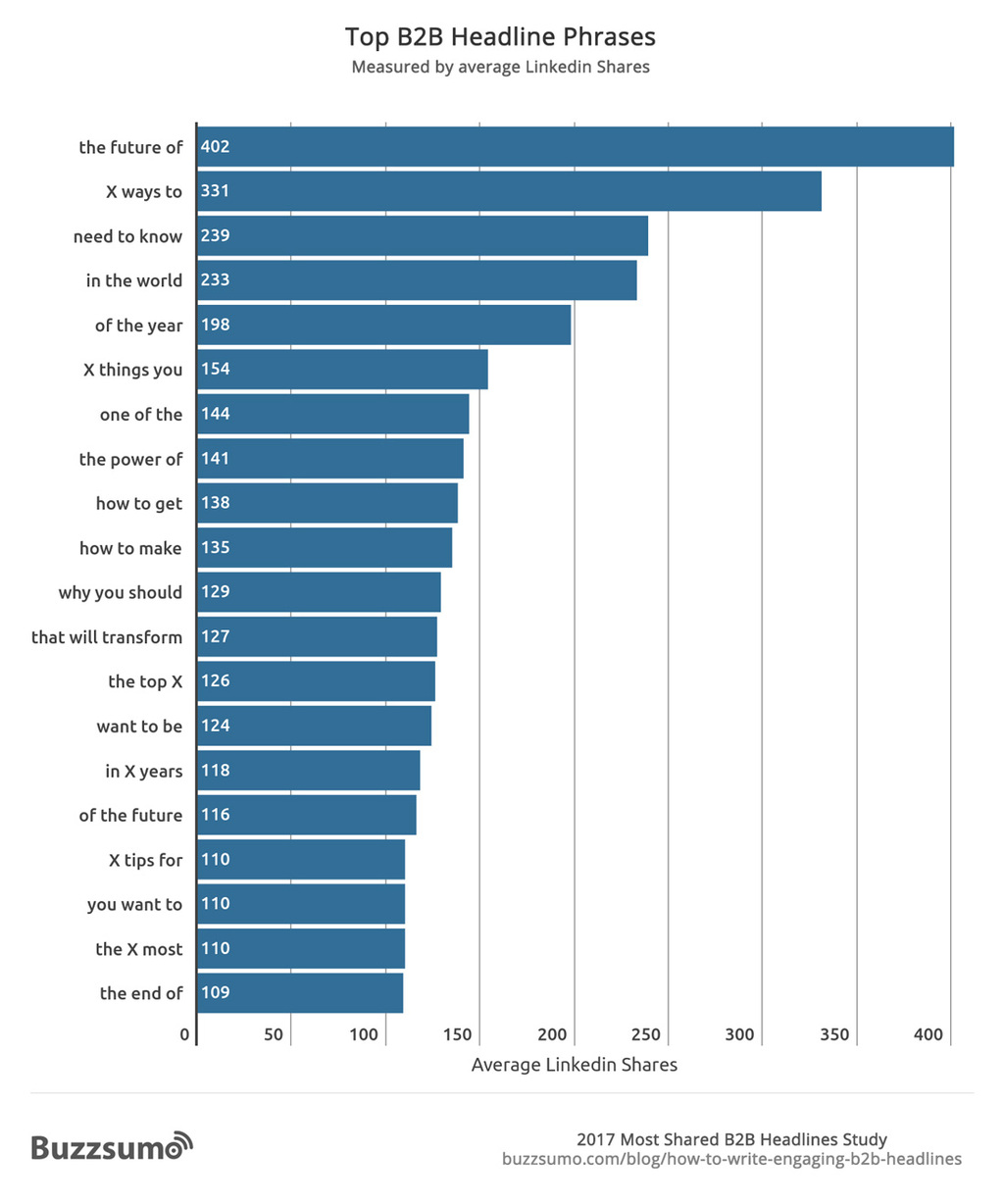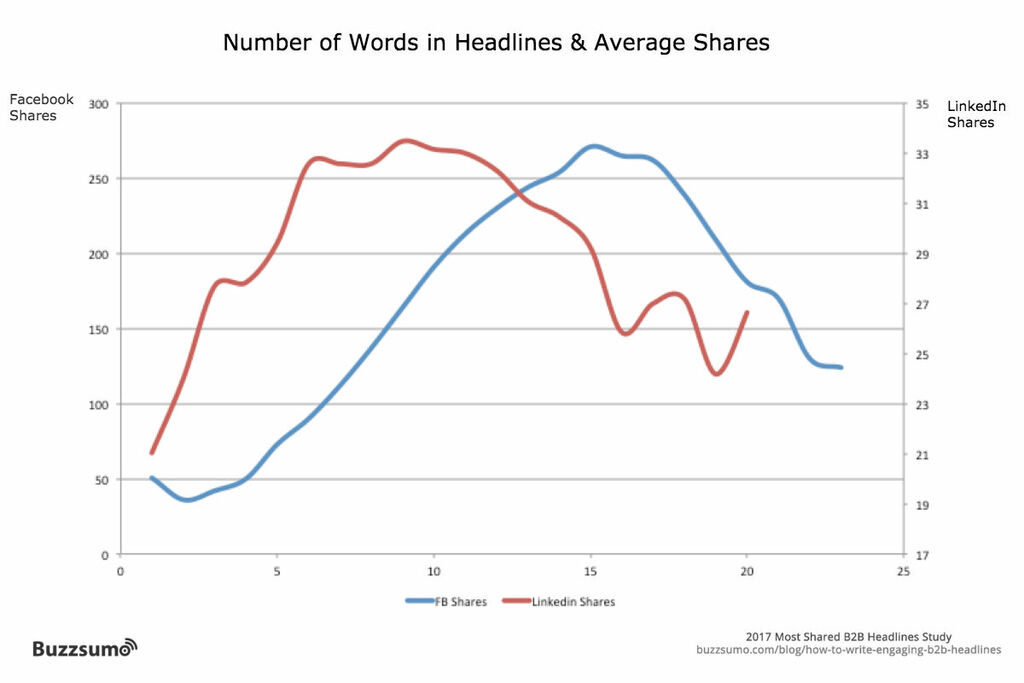Updated November 4th 2023
100m Articles Analyzed: What You Need To Write The Best Headlines
A headline isn’t just an article title. It’s a tiny window of opportunity to connect with your audience.
It’s a subject line, a tweet, a h2, a video title – basically anything that aims to:
- Convey information succinctly
- Encourage a desired action – ie. clicks, views, shares etc.
But writing a good headline is no mean feat – especially today. We have algorithms deciding who gets to read our headlines, we have more competition than ever before, and we have audiences with exceedingly high standards.
So, what constitutes a “good” headline? Inspired by BuzzSumo co-founder Steve Rayson's much loved most-shared headlines study back in 2017 (Read below), we have once again dug into the BuzzSumo index to analyze a casual 100 million headlines.
We also asked industry leading marketing experts to give their thoughts on our findings.
Read on to find out:
- The ideal headline length
- The best numbers to use in headlines
- How headlines have changed since 2017
- Headline phrases that drive the most Facebook engagement
- The top themes in the best Facebook headlines
- Phrases that start or end the best Facebook headlines
- Headline phrases that drive the most Twitter engagement
- How to write headlines for Facebook AND Twitter
- What the marketing experts think
- How to analyze the best headline phrases using BuzzSumo
And if you want to find out the best headlines, types, and topics across B2B content marketing examples, read our 2022 research.
Our top 5 insights:
- Instructional headlines drove the most Facebook engagement.
- Curiosity headline phrases – ie. those that hinted, teased or questioned something – tended to fare a lot better on Twitter.
- The top headline phrase on Facebook had 590x more average shares than the top headline phrase on Twitter.
- The ideal headline length is 11 words and 65 characters, according to the most shared headlines on both Facebook & Twitter.
- The top Facebook headlines are no longer published by low-quality entertainment publications, but instead by authoritative news sites.
If you’re a publisher or content creator, the findings of this report will be relevant to you. You’ll learn which headline types actually work on Facebook and Twitter, and best practice techniques for writing headlines that click.
The ideal headline length
Don’t be fooled by outdated studies that tell you to write snappy six word headlines.
Headlines need to be specific and reveal enough detail to really draw readers in.
In our study analyzing 100m of the best headlines across Facebook and Twitter, we found the ideal headline length to be 11 words and 65 characters.
That being said, headlines have got shorter over the years.
Check out our 2017 comparison of headline lengths to find out more.
The best numbers to use in headlines
The magic number to use in headlines is… 10.
✨ 1️⃣ 0️⃣ ✨
Excluding the magic number 10, we prefer to share articles featuring single digit numbers.
Numbers three through to 10 drive the most engagement on social media, taking the top seven positions for the most shared headlines on Facebook and Twitter.
We don’t seem to have a strong preference towards odd or even numbers – nine of the top 20 numbers are odd, while 11 are even.
Both odd and even numbers appear in the five most shared headlines.
How headlines have changed since 2017
For those of you that don’t know, we carried out our most shared headlines study back in 2017 (Read below).
One of the aims of updating the study was to find out if headlines had changed much over time.
TL;DR: they definitely have.
Emotional headlines are a thing of the past
Back in 2017, we found that emotional words in headlines drove the most engagement on Facebook, with the following phrases performing best:
- Tears of joy
- Make you cry
- Give you goosebumps
- Is too cute
- Shocked to see
- Melt your heart
- Can’t stop laughing
These kinds of explicitly emotional or sensational headlines were few and far between in our updated analysis.
In fact, across our entire Facebook sample, we only came across one overtly emotional headline phrase “in love with” which was the 55th most popular headline trigram, with an average of 1,723 shares.
In 2017, the top phrase on Facebook, “will make you”, was also often used as a precursor to emotional headlines ie.
- What This Airline Did for Its Passengers Will Make You Tear Up – So Heartwarming“
- Who Wore It Better?” Pics That Will Make You Laugh Out Loud
At the time, the top headline for the “will make you” trigram achieved 1.7m shares. This time around however, the top headline for that same trigram achieved just 143k shares.
The closest we get to emotion nowadays is through the use of exaggerated phrases ie. “one of the most beautiful”.
Back in 2017, BuzzSumo co-founder Steve Rayson, described this trigram as a form of “emotional content, with often an explicit promise of exceptional content”.
So emotional headlines can still work if you’re referencing exceptional content – but overtly emotional or sensational headlines have seemingly had their day.
Quizzes and tribal headlines are also out
Back in 2017, headlines were all about inclusivity and identity.
Quizzes were big.
Phrases like “can we guess” (ie. Can We Guess Your Real Age?) or “only X in” (ie. Only 1 In 50 People Can Identify These 16 Grammar Mistakes. Can You?) dominated the most shared headlines.
Tribal headlines also made a regular appearance (ie. 25 Things Only Teachers Will Understand, 17 Things Only Moms of Twins Understand).
When you read these headlines now, it feels like a blast from the past. I think the only time I stumble across this kind of content is when my mom has been let loose on the interwebs (she wants you to know she has a very advanced vocab).
These kinds of headlines cropped up rarely in our updated analysis.
The best headlines have changed almost entirely since 2017
On Facebook, there is 100% difference between the top 20 headline phrases in 2017 vs 2020.
Similarly, on Twitter, only two of the most popular headline phrases have remained the same since 2017.
We can attribute this stark change to a few things; algorithmic maturity, audience preference and the publisher landscape.
Whether social media has taught us what to consume, or whether we have taught it, there’s no denying that the production and consumption of content has become more refined over the years.
In 2017, Steve Rayson pointed out that Facebook had begun demoting clickbait style content (ie. “what happened next” headlines); this began on May 17th 2017.
The lack of emotional, tribal and quiz based phrases in our updated analysis signals a continuation of this algorithmic development.
Headlines are snappier these days
As we’ve already seen above, 11 words and 65 characters is the ideal length for a top shared headline based on our updated study.
But in 2017, the optimum formula was 15 words and 95 characters.
The headlines we like to share on social media now have reduced by approximately four words and 30 characters.
We need our information and we need it fast!
In a recent study of 1.7bn articles, we found that all content published online has increased by 64% since 2016.
Content overload is no joke. It’s little wonder then that we prefer snappier headlines that get to the point.
Headlines have become more homogenous
Twitter headline phrases are not too dissimilar from those on Facebook – with many of the same overarching themes and even the exact same language.
In 2017, Facebook and Twitter shared only one phrase in common, across the top 20 headlines.
Now, eight of the top 20 headline phrases crossover on Facebook and Twitter, taking the data from 2.5% similarity to 20%.
The moral of the story here is, duplicating headlines across networks as part of your content distribution strategy can work for the right kind of headline.
That being said, it never hurts to test to see what works best for you.
Headlines are being shared more on Facebook and less on Twitter
The most engaging Facebook trigram in 2017 “will make you” garnered 8,691 shares on average.
In our updated study however, the top phrase “of the year” managed 26,702 average shares – or 3x the amount.
On Twitter it was a very different story; shares decreased by nearly 4x the amount, when comparing the most shared phrases in 2017 vs 2020.
This got me thinking: Are we sharing Twitter headlines less than we were before, or are headlines simply more varied on Twitter now than they were in 2017 – thereby diluting average shares of common headline phrases?
I turned to BuzzSumo to figure this out, and from an analysis of 11 million Twitter engagements, I found that Twitter shares had dropped by 14% from 2017 – 2020.
This is a super interesting development, since monthly active users (MAU) have stayed largely the same over a similar time period.
The top numbers in headlines are largely the same
When it comes to the top number featured in headlines, not much has changed since 2017.
As we already know, the number 10 is still very much the firm favorite, however other double digit numbers – like 15 and 20 – seem to have fallen out of favor.
Once again it’s all about speed to insight; it seems we’re finding larger numbers and longer lists less appealing to share.
The top publishers have changed drastically across both platforms
After seeing headline phrases change pretty radically, we wondered if the publisher landscape reflected this.
We analyzed the top 10 domains for the most engaging headlines phrases, in 2017 vs 2020.
We found that…
- YouTube content has always been behind the most shared Twitter headlines, but with 494% growth since 2017, that ownership has turned into a monopoly.
- The headline phrases that came top on YouTube in 2020 gave way to fairly sensational and hyperbolic content – ie.
- “in the world”
- “the power of”
- YouTube videos featuring “the truth about” also generated a lot of engagement on Twitter. The most shared YouTube videos on Twitter revolved around politics and K-pop.
- Four new domains entered the race in 2020 including time.com, forbes.com, pscp.tv (Periscope) and thegatewaypundit.com.
- Periscope signals the rise of live video, while The Gateway Pundit – a far-right political news site – is reflective of the 2020 US elections.
- The BBC, The Independent, BuzzFeed and Mashable all dropped out of the race in 2020.
- YouTube, once third, is now firmly in position #1 for the most shared headlines, growing by an almighty 3000%. The most shared YouTube videos in 2020 were overwhelmingly “how tos”.
- Seven domains entered the race in 2020 – six of which were news publishers:
- cnn.com
- dailymail.co.uk
- nbcnews.com
- washingtonpost.com
- cbsnews.com
- time.com
- Entertainment websites dropped off dramatically in 2020 – particularly lesser known and low quality sites like icreative.am or apost.com. Boredpanda.com and BuzzFeed.com managed to hang around, but dropped 5 and 8 places respectively, out of the top 10 domains.
As we know, Facebook began culling clickbait headlines in 2017, but on January 19th, 2018 the social media giant also announced it would start prioritizing news content from trustworthy sources.
Further refinement to this algorithm was announced on June 30th, 2020, centering around boosting original and authoritative news reporting.
And we can see this preferential treatment of news publishers as clear as day in the comparison above.
This, along with the decision to move away from clickbait headlines, has undoubtedly impacted the most shared Facebook phrases we’ve examined throughout this study.
If anything, we know now that our updated headline findings are based on more reliable sources.
So, if you’re a publisher and you’re reading this, you can feel that bit more confident in applying the results of this research to your own content.
Headline phrases that drive the most Facebook engagement
In our analysis, we looked at the most popular three word phrases, known as “trigrams” that gained the highest average shares on Facebook.
We find trios satisfying, memorable, and impactful (see what we did there 😉).
This pattern of communication has been used for centuries in everything from poetry to film, religion, and advertising.
With this in mind, we chose to prioritize three-word phrases throughout our headline research.
These phrases could have started or ended the headline, or even connected it somewhere in the middle.
They are as follows…
In our sample of the best headlines, the phrase “of the year” came in at number one, followed closely by “in X years”.
While they sound similar – ie. both time centric – we found their usage to be pretty different.
The headlines returning for “of the year” were concerned with rankings and awards – ie. person, film, sportsperson or meme of the year.
Most shared “of the year” headline examples:
- Greta Thunberg: TIME’s Person of the Year 2019 (time.com 2.1M shares)
- American Girl’s 2020 girl of the year is 1st doll with hearing loss (goodmorningamerica.com 557K shares)
- Adut Akech named Model of the Year at British Fashion Awards 2019 (cosmopolitan.com 424K shares)
The second phrase, “in X years”, returned headlines centered around newness, with the trigram often making up part of the longer phrase “for the first time in X years”.
Coincidentally, this phrase also combines the second (“in X years”), third (“for the first”) and fourth (“the first time”) most popular trigrams.
Most shared “Newness” headline examples:
- Photographer And His Wife Plant 2 Million Trees In 20 Years To Restore A Destroyed Forest And Even The Animals Have Returned (boredpanda.com 3.1M shares)
- Himalayas visible for first time in 30 years as pollution levels in India drop (sbs.com.au 2.3M shares)
- The Most Beautiful Flower Garden In The World Has No Visitors For The First Time In 71 Years And I Got To Capture It (boredpanda.com 832K shares)
This trigram also borders on another category: Surprise. Number of years are included seemingly to invoke shock or surprise at the extent of time...
Most shared “Surprise” headline examples:
- Foster mom raised 600 kids in 50 years — took in children no matter age or medical condition (spotlightstories.co 1.4M shares)
- George Clooney: Racism Is Our Pandemic And In 400 Years We’ve Yet To Find A Vaccine (huffpost.com 2.1M shares)
- We Are About To Witness A Rare Planetary Alignment Not Seen In 800 Years (awarenessact.com 1.1M shares)
Back to trigram #1 (“Of the year”). Why does this particular three word phrase work so well?
Putting something or someone on a pedestal, and attaching the “of the year” accolade will generate a lot of discussion between those who agree or disagree with the decision – the “Fans” and the “Haters” so to speak – and even more so if the decision is controversial or atypical.
Supporters will share in solidarity, while many others will share to deride or mock.
With trigrams #2 through to #4, the focus on newness is about letting the audience in on the details of a rare occasion or unique set of circumstances. It builds intrigue and makes the audience want to click through.
The top themes in the best Facebook headlines
To get a better understanding of the types of headlines that tended to perform best on Facebook, we categorized the top 60 trigrams.
The best headlines fell into eight main categories.
There was some crossover, but we focused on the most common patterns.
The themes included:
1. Ranking
Ranking trigrams were based on headlines that largely focused on awards or public votes.
Headline example: Joe Biden and Kamala Harris: TIME’s Person of the Year 2020 (cnn.com 418K shares)
2. Newness
Newness trigrams featured in headlines that centered around unique, rare or one-off events and circumstances.
Headline example: For the first time in history, U.S. billionaires paid a lower tax rate than the working class (washingtonpost.com 1.2M shares)
3. Hyperbole
Hyperbolic trigrams were ones that gave way to exaggerated statements in headlines.
Headline example: Why Your Older Sister Is One of the Most Important People in Your Life (brightside.me 2.1M shares)
4. Instructional
Instructional trigrams were ones that gave way to commanding statements or phrases that suggested some sense of obligation and / or urgency.
Headline example: Everything you need to know about washing your hands to protect against coronavirus (COVID-19) (unicef.org 2.2M shares)
5. Surprise
Surprise trigrams included statements that were designed to shock or challenged standard views on a subject matter.
Headline example: There Are At Least 36 Intelligent Alien Civilizations In Our Galaxy, Say Scientists (forbes.com 990K shares)
6. Curiosity
This type of headline indicated that the content was going to reveal, explain or analyze something. This often came in the form of declarative statements ie. “here are the”, as well as listicle headlines like “X reasons why”, or prediction posts ie. “the future of”. Any headline phrase that presented some form or question was also included in this category.
Headline example: Museum Asks People To Recreate Paintings With Stuff They Can Find at Home, Here Are The Results (sadanduseless.com 3.1M shares)
7. Guidance
This headline type returned “How to” or tutorial based headlines.
Headline example: How to make cookie cereal, the hottest new food trend (insider.com 941K shares)
8. Story
Story trigrams included headlines that were centered around a person or topic – similar to that of a case study.
Headline example: Inside the Story of How H-E-B Planned for the Pandemic (texasmonthly.com 357k shares)
Instructional headlines drive Facebook engagement
While rankings and newness topped the charts, it was instructional headlines that stole the show.
What do we mean by instructional? In this instance, we focused on modal verbs – ie. you need to, you should, you must – and any statement that required someone to do something.
We found that 13 of the top 60 most engaging Facebook headlines were either instructional, or part of a wider (commonly used) phrase that was instructional.
For example:
- you need to (#6)
- need to know (#7)
- to know about (#9)
- what you need (#19)
- why you should (#33)
These phrases can be, and were, threaded together to create popular longer phrases:
- Lilies and Cats: What You Need to Know About Toxic Plants (wideopenpets.com 841K shares)
- What you need to know about the COVID-19 vaccine (gatesnotes.com 206K shares)
- What You Need to Know About the Death of Soleimani (aclj.org 455K shares)
But what makes instructional phrases so popular with readers? Let’s talk about the connotations of trigram #6 “you need to”.
By bringing in the second person pronoun “you”, the writer of the headline places sole responsibility on the reader. It’s giving them a clear instruction and – not only that – it’s invoking a sense of FOMO: “You need to do this” subtext: “Or else…”.
Here’s a perfect example of that in the wild…
Now let’s dig a little deeper into trigram #7 “need to know”.
Commonly, this phrase refers to the practice of providing or receiving only the most important information. Think of the term “on a need to know basis”.
In the same way, a headline featuring “need to know” is clearly communicating to readers that they will get a concise overview of the most critical elements of the story. In other words, it’s teasing what the article will reveal.
In the same way as above, it also evokes a bit of FOMO: “You need to know this” subtext: “Everybody else does.”
Hyperbole is one of the most successful headline categories
Superlatives are words that exist in three forms, and are used to highlight different degrees of comparison and exaggeration ie.
Much > More > Most
Great > Greater > Greatest
Phrases that gave way to hyperbolic, superlative or generally exaggerated headlines gained a high level of engagement on Facebook.
For instance:
“One of the” #5
This trigram was very commonly followed by superlative adjectives ie. “One of the most” or “One of the greatest”.
Example headline:
- Kale is now one of the most pesticide-contaminated vegetables (cnbc 610K shares)
“Of the most” #12
These headlines also gave way to hyperbolic phrases…
- This Brown Siberian Husky Is One of the Most Beautiful Dogs on Instagram (mymodernmet.com 749k shares)
“X of the” #14
And same again here…
- 30 Of The Funniest Outdoor Signs From This Vet Clinic That Dad Joke Lovers Will Appreciate (boredpanda.com 325k shares)
“Of the best” #16
Out of all the hyperbolic and superlative words, it would seem that “best” is one of the… well… best!
- Pink beach in Zamboanga City Philippines Is One Of The Best In The World (furrycategory.com 219k shares)
FYI: You might have also spotted “of all time” in the top 20. While this is clearly hyperbolic, we found that the majority of headlines incorporating this phrase were the result of awards or public vote, and therefore placed it in the “ranking” category.
Phrases that start or end the best Facebook headlines
Our research was driven by the need to better understand the principles of great headline writing – that’s true.
But we also wanted to get to grips with optimum headline formats and composition.
To do this, we studied phrases starting, connecting and ending only the best headlines.
Unlike the three word phrases above, the following trigrams sit at the very beginning of the most effective headlines on Facebook.
The thing that jumps out straightaway is the amount of headlines beginning with a number – or “listicles” as they’re more commonly known. Six out of twenty phrases start with a number, and three more also feature a number.
Numbers promise the reader information and actionable takeaways. They’re also a great way to make headlines more specific and, therefore, clickable, according to Brian Dean (Founder, Backlinko).
Next, it’s clear that instructional (ie. “X things to”, “everything you need”, “why you should”) and curiosity phrases (ie. “X reasons why”, “what is the”, “this is the”) are also super effective, taking up twelve out of the top 20 trigrams at the start of the most popular headlines.
But when we extended our analysis to the top 60 phrases, and categorized them like we did above, guidance trigrams (ie. “how to’s”) were by far the most popular.
It seems the people of Facebook are keen to learn! 🤓
Newness and guidance words work best at the start of Facebook headlines
We took a look at the most common word at the start of the most shared headlines.
Coming in at #1 was *drum roll please* 🥁…
“The”
You heard it here first 😎
Looking beyond the obvious, we found that words suggesting newness (ie. “new”) and guidance (ie. “how”) gained some big shares.
Time-centric phrases are the most popular way to end headlines on Facebook
The top four ending phrases had significantly more average shares, and were all concerned with the happenings of 2020 or what was to come in 2021. It’s clear that these headlines focused on the effects of the pandemic.
Time-centric headlines
General time-centric headlines also worked well despite the pandemic. Overall, nine out of the 20 ending headlines were time-centric – whether that was across the “year” or down to the “second”.
Figures were used in headlines to surprise
We also noticed that when a number ended the most shared headlines – time-centric or not – it was more often than not used to induce surprise – ie.
- FDA approves new test that could detect coronavirus in about 45 minutes (cnn.com 1.6M shares)
Figures were used in headlines for speed to insight
Alternatively, numbers were used to highlight speed to insight – ie. “In just 5 minutes”
- Lemon Icebox Pie, An Old Favorite in just 5 Minutes (youtube.com 528K shares)
Social media trends fuelled content headlines
And, if you look at #7 on the list, you’ll see that social media trends were also fuelling some of the most shared headlines.
The phrase “social media” gave way to surprise based headlines, which turned novel or trending social media conversation into content – ie.
- Wavy Lips Are The Latest Beauty Trend Taking Over Social Media (goodlivingguide.com 397K shares).
We all use content to fuel our social media posts, so why not use social media trends to fuel our content?
Everyone loves to be ahead of the curve, which is precisely why this kind of content is so widely shared. Think of it as the content-conversation loop 🔁
Headline phrases that drive the most Twitter engagement
We can’t talk about headlines and not discuss Twitter. Here are the top three-word phrases on Twitter…
It seems Tweeters were very interested in the “future of” things, sharing these kinds of headlines an average of 45 times.
Most shared “future of” headline examples:
- A Look at the Future of Gaming on PlayStation 5 (46K shares)
- BTS talks Dynamite, life in quarantine & the future of their music… (28K shares)
- Rihanna Opens Up About Her New Clothing Line, the Future of Fashion and Her Next Album (13K shares)
This same phrase was most commonly used at the beginning of Twitter headlines too…
And when it came to the top words starting headlines on Twitter, we were excited to see some interesting clues as to the contents of the headline.
Two words jumped out to us here: “study” and “report”. It seems that if you’ve got research to share, Twitter is the platform to share it on.
The phrases ending headlines on Twitter were equally interesting. Like Facebook, Twitter audiences were hyper concerned with the date, time and present developments – with the top two “2020” based headlines garnering double the shares of the next most popular phrase, and the top eight headlines all ending in this way.
In fact, at least 13 of the top 20 ending bigrams here were concerned with immediacy and reactivity. Twitter audiences clearly have an appetite for current affairs.
How to write headlines for Facebook AND Twitter
We’ve seen that writing for Facebook is all about instruction and exaggeration if you want those shares. But what about Twitter? Is it really that much of a different beast?
We analyzed the top 60 phrases on both Facebook and Twitter, to examine headline themes side by side and answer just that.
Curiosity headline phrases – ie. those that hinted, teased or questioned something – tended to fare a lot better on Twitter.
But if you’re looking for success on both platforms, then instructional headlines – ie. “need to know” “look at the” or “what to do” – are the way to go.
The category with the biggest discrepancy between both platforms here is “story”. Audiences evidently prefer to share stories around the people and topics they love or hate on Twitter, so if your content is about “the story of”, “the history of” or “the rise of”, then Twitter is the platform for you.
Of course, headline themes can overlap, and we’re dealing with very different networks and datasets here.
In fact, we found that the most shared headline phrase on Facebook had 590x more average shares than the most shared headline phrase on Twitter.
With that in mind, it’s wise not to restrict your content to Twitter. Try writing headlines for different channels, and testing what appeals most to your audience.
What are the top crossover headline phrases?
Interestingly, eight out of the top 20 headline phrases in our 100m study were the same across Facebook and Twitter.
These included:
- at least X
- for the first
- here are the
- is not a
- of the year
- one of the
- the first time
- what you need
And when it came to the top phrases starting headlines, we found that 10 phrases – or 25% of the overall sample – crossed over on Twitter and Facebook.
- the story of
- the top X
- the X best
- the X most
- this is how
- this is the
- what are the
- what is the
- what you need
- why you should
These kinds of phrases were more likely to entice a share, regardless of the network they were distributed on.
What the marketing experts think
Heidi Cohen
Chief Marketing Officer, Actionable Marketing Guide
This update to BuzzSumo’s 2017 100m Headline Analysis reflects how the marketing landscape has changed over the last 5 years. Most notably, it reveals 3 key customer behavior changes due to the pandemic:
- Content saturation continues to overwhelm all customers. As a result, they focus on shorter headlines, 11 words or a maximum of 65 characters. At a minimum, front load your headline’s key message.
- Trust outweighs other content factors for all customers. If your audience doesn’t trust you and the platform where you publish, then they won’t look at your content! So branding matters more than ever.
- Social media use replaced real life interactions during the pandemic. People turned to Facebook to keep up with the people they no longer were able to see face-to-face. At the same time, others spent less time on Twitter since they got their information through other channels and sources.
Based on these results, I recommend that marketers focus on core marketing basics to ensure that they get the most out of their marketing investment over the long-term.
Further, as the world emerges from the pandemic, continue to talk to your existing customers to determine how their needs may have changed.
Also test new options for reaching your broader audience.
Julian Shapiro
Founder, Demand Curve
One of the highest signal-to-noise reports on content marketing. This is the type of data that BuzzSumo can uniquely put together.
Rand Fishkin
Founder, SparkToro
If you’re a content creator, strategist, or marketer, reviewing data at scale from this study is a very wise investment. It won’t just help you with writing headlines (though it’s absolutely valuable for that), but with contrasting what’s worked in the past vs. what works today. Clickbait, emotional triggers, listicles, conspiracy content, and quizzes have long held a dominant position in how marketers think about what works on social media platforms. BuzzSumo’s research confirms some of those, mythbusts others, and illuminates the nuance of what’s really working.
Ross Simmonds
Founder, Foundation
It’s fascinating to see that years after BuzzFeed shook up the journalism industry with “click friendly” headlines that they’re now being adopted by the masses and even those who originally pushed back on the approach. The success of incorporating instructional copy such as “you need to” and “you should” is an amazing insight that more brands should consider applying to in their headline writing. At the end of the day, this entire study showcases the importance of understanding human psychology and the human desire of not missing out on information that is important to our circles.
Brian Dean
Founder, Backlinko
Fascinating to see that instructional headlines work best on Facebook. That’s a huge shift from the heyday of Facebook organic, which was all about BuzzFeed-style clickbait. This data shows that it’s possible to get content in front of your audience on Facebook. But today’s Facebook users need to know that the content is going to teach them something new.
Amanda Milligan
Marketing Director, Fractl
I find the “instructional” headline trend fascinating, because I’ve definitely noticed it gaining popularity over recent years, and I’d bet it’s in response to people’s growing desire to hear and learn from experts. When headlines feature this type of language — “everything you need,”,“why you should,” “this is the best,” etc. — it inherently demonstrates authority. That news source isn’t just providing you with information; they’re saying they know what’s best. I’d encourage brands to consider the authority they carry in their space and how they can leverage that to benefit readers through this sort of content.
How to analyze the best headline phrases using BuzzSumo
If this research has inspired you to do your own digging, you can head to the BuzzSumo Content Analyzer to examine headline phrases for yourself.
All you need to do is search your chosen phrase in inverted commas – ie. “need to know”
This will reveal the best headlines, based on social media shares and engagement across Facebook, Twitter, Pinterest and Reddit.
You can also find out other performance insights here, such as number of backlinks, evergreen scores and the top sharers of headlines.
You can also add words after the phrase to further refine your search results, and can even do more specific phrase searches, including:
Your search can be in any language, across any TLD, and you can focus on headlines written by prominent journalists, or even generate a full report on the headlines you study in the Content Analysis tab view.
Plus, you can view great headlines and headline phrases for specific domains such as time.com.
Find out more about getting the most out of BuzzSumo Content Analyzer searches here.
Paid plans will give you more years of historical data and allow you to export to 10,000 headlines as a CSV.
A recap of what we’ve learned
News headlines, subject lines, blog headlines, ad copy, social media headlines, dating profiles – whatever kind of headline you’re looking to write, you can use the data-backed findings of this study for inspiration.
Steve Rayson made a great point in 2017 when he said this kind of research is not just about copy + pasting the best headline phrases into your own titles (we’re seeing enough headline duplication as it is!)
Instead, use the findings of this study to better understand the common themes, best practices and top principles of headline writing.
How to write better headlines:
- Instruct the reader to take action
- Use superlative language and promise exceptional content
- Provide guidance and answer questions
- Use numbers to surprise, reinforce speed to insight or make your headlines more specific
- Tease details and ask questions
- Keep tabs on changes in algorithms and audience interests
If a headline is good enough in and of itself, people will share it ahead of even reading the article.
Ask yourself:
- SWIFT – So What’s In It For Them?
- Can you be clear about what you want from the reader?
- Can you tease any information, without falling into the realms of clickbait?
- Can you lead with a surprising statement?
- Can you fit your content into 11 words and / or 65 characters?
Methodology
- We studied 100m headlines published between 1st January 2019 and 31st December 2020, and analyzed those that gained the most social shares.
- We analyzed two years of data (2019-2020) to normalize a dataset that would otherwise have been largely skewed by the pandemic.
How we cleaned the data
- We focused on the headlines phrases that demonstrated some form of pattern or trend.
- We omitted vague or generic phrases that didn’t demonstrate any real pattern or theme (ie. “to be a” or “out of the”), as well as phrases that were too specific (ie. “in New York”) or topic focused (ie. “Mental health”). Our reason for doing so was to hone in on evergreen headline phrases that can apply to any industry and time frame.
Why we chose to measure engagement by average median shares (explained with an example).
- Let’s say one www.nytimes.com article uses the headline phrase “this is why”, and it generates 10 million shares. Then let’s imagine a bunch of other news sites use this same phrase, but receive only 1-5 shares. If we were to apply a mean average, “this is why” would end up being the #1 trigram, but that would be an anomaly as a single www.nytimes.com article would be pushing up the average. When using the median, we avoid that problem entirely.
As above, we were conscious that popular sites can skew the results, therefore in this analysis we only included one headline trigram / phrase per domain. For instance, “can we guess” is a very popular BuzzFeed trigram, therefore we would only have included one “can we guess” headline from BuzzFeed in our trigram analysis.
Thank you to Steve Rayson for creating the original research (Read below) in 2017 that inspired this report, and to Henley Wing Chiu, Co-Founder and CTO of BuzzSumo, for painstakingly collecting the data.
100m Articles Analyzed: What You Need To Write The Best Headlines was written by Louise Linehan, BuzzSumo's Content Manager.
2017 Research Analyzing 100m Headlines
It is difficult to overstate the importance of headlinesA good headline can entice and engage your audience to click, to read, and to share your content. In many cases headlines are the thing that is shared rather than the article. So you knew that. But do you know what makes an engaging headline?
To help answer this question we analyzed 100 million article headlines. We have set out below our findings from the research including the:
- Headline phrases that drive most engagement on Facebook
- Worst performing headline phrases on Facebook
- Most effective phrases that start or end headlines
- Optimum number of words and characters to use in a headline
- Most impactful numbers to use in headlines
- Most engaging Twitter headline phrases
- Differences between B2C and B2B headlines
While there is no magic formula for creating viral content or a popular headline, there are many lessons we can learn to improve our content engagement. We shared our findings with a number of content experts to reflect on the implications of the research for writers. We have included their expert thoughts and advice at the end of this post. We have also included a section on how you can analyze headlines yourself using BuzzSumo.
Note: This research looks at the most shared headlines on Facebook and Twitter which tend to be dominated by major publishers and consumer content. Thus the insights will be particularly interesting for publishers. We are undertaking separate research on engaging headlines for business to business content which we will publish later this year.
Most Engaging Headline Phrases: The Data
In our survey of 100m headlines published between 1st March 2017 and 10th May 2017, the three word phrases or trigrams that gained the most Facebook engagements (likes, shares, comments) were as follows.
Why The Data Will Make You Think Again About Headlines
In our sample the most powerful three word phrase used in a headline (by some margin) was:
“Will make you … “
This phrase “will make you” gained more than twice the number of Facebook engagements as the second most popular headline trigram. This was a surprise. When we started out looking for top trigrams, this one wasn’t even on our list.
So why does this particular trigram or three word phrase work so well? One of the interesting things is that it is a linking phrase. It doesn’t start or end a headline, rather it makes explicit the linkage between the content and the potential impact on the reader.
This headline format sets out why the reader should care about the content. It also promises that the content will have a direct impact on the reader, often an emotional reaction. The headline is clear and to the point which makes it elegant and effective.
Typical headlines include:
- 24 Pictures That Will Make You Feel Better About The World
- What This Airline Did for Its Passengers Will Make You Tear Up – So Heartwarming
- 6 Harsh Truths That Will Make You a Better Person
- “Who Wore It Better?” Pics That Will Make You Laugh Out Loud
- 13 Travel Tips That Will Make You Feel Smart
See the most shared “will make you” headlines from the last year.
Emotional Headlines Drive Facebook Interactions
In our analysis we found that emotional phrases were consistently effective on Facebook as measured by the number of interactions. For example:
- Tears of joy
- Make you cry
- Give you goosebumps
- Is too cute
- Shocked to see
- Melt your heart
- Can’t stop laughing
Many of the top performing posts with emotional headlines had image or video content although there were also story posts. Below is an example video post.
Despite the strong performance of emotional posts, content writers increasingly have to be careful in using emotional and sensational language. In May 2017 Facebook announced it will demote “headlines that exaggerate the details of a story with sensational language” and which aim “to make the story seem like a bigger deal than it really is.”
Curiosity and Voyeurism Also Gain Facebook Engagement
Headline phrases that provoke curiosity and a sense of voyeurism also gained a high level of engagement on Facebook. For example:
- What happened next
- Talking about it
- Twitter reacts to
- Are freaking out
- Top x songs
Readers are often curious about what is being talked about by people, what the top items are in a league table, or what is being said by people on Twitter about a topic or event. This type of content appeals to a reader’s sense of curiosity and voyeurism. If you are curious, here are the most shared posts in the last year that have “are freaking out” in the headline.
We would caution writers to avoid ‘what happened next’ style headlines. While they have previously performed well, Facebook now categorises headlines that withhold information as clickbait and demotes them. In my personal view this is a good thing and I hope we will see an end to such clickbait headlines.
Other Engaging Headline Phrases
Explanations
- This is why
- The reason is
These phrases are also linked strongly to curiosity. For example:
- And this is why women live longer than men…
- This is why you should be sleeping on your left side
We all want to feel that bit smarter after reading a piece of content. Explainer articles promise you an extra nugget of insight. In some ways they are similar to the “will make you” phrase headline as they make a promise about what you’ll gain as a result of reading the article.
Here are the most shared ‘this is why’ headlines of the last year.
Quizzes
- Can we guess
- Only x in
These phrases are used in popular quiz headlines, for example:
- Can We Guess Your Real Age?
- Only 1 In 50 People Can Identify These 16 Grammar Mistakes. Can You?
Quizzes remain an engaging format on Facebook. The first of these headline types is a quiz variation, it challenges you to answer to questions and to see if the quiz can then predict your age, level of education, job etc., based on your answers. These quizzes appeal to our desire to know more about ourselves and to prove we’re smart, we did grow up in the 80s, we are living in the right city, or whatever it might be. These quizzes are like mirrors, it’s hard to walk past with out looking at yourself. They are hard to ignore.
Tribal headlines
- X things only
These popular headlines appeal to a sense of tribal belonging for example:
- 25 Things Only Teachers Will Understand
- 17 Things Only Moms of Twins Understand
- 9 Things Only Girls Who Grew Up With Older Brothers Will Understand
- 10 Things Only Night Shift Nurses Understand
Here are the most shared examples of ‘things only’ headlines in the last year.
We have seen a significant growth in tribal headlines, particularly politically partisan headlines. It is almost as if there is a duty on the tribe to share posts that support their viewpoints. We saw this in the US elections and we have seen something similar in the recent UK elections. These tribal headlines tend to gain a lot of engagement and shares, which might be encouraging sites to use polemical headlines more frequently.
The Worst Performing Phrases
We thought it would also be interesting to examine the commonly used phrases in headlines that receive the lowest Facebook engagement.
Note: We only looked at phrases or trigrams that were used on a minimum of 100 different domains. There will be worse performing phrases than those used above but these are the worst performing commonly used phrases.
It was interesting to see how poorly phrases like ‘on a budget’ performed on Facebook. While some individual articles did well, the average Facebook engagement was very low. By contrast the phrase ‘on a budget’ appears to work really well on Pinterest for DIY topics. See the examples below.
This highlights the importance of context. It may simply be that Facebook is not a place where someone is actively looking for tips to save money and that the Pinterest DIY context is better suited to this content. This reinforces the need to research what works for your audience, your topics and specific social networks. A headline may perform poorly on Facebook but work very well with a different audience on a different social network. The same is true when writing for different sectors, for example a phrase like ‘need to know’ may work well in say health but work less well in a different context. The key is to research what resonates with your specific audience and to test your headlines.
Phrases That Start Or End Headlines
The most popular phrase “will make you” is a phrase that clearly sits in the centre of a headline as it connects two elements. Thus it creates the structure by linking something to an emotional reaction.
This was partly a surprise as previous research has suggested the most important part of a headline is the first three words and the last three words. It may be that using a linking phrase such as “will make you” actually emphasizes the importance of both the beginning and end of the sentence.
We thought it would be useful to look at the top three word phrases that start headlines and the phrases that end headlines.
Below are the most popular phrases that end headlines by number of Facebook interactions (x represents a number).
Finally, below are the most popular first words that start headlines by average Facebook interactions.
Two word phrases
In our analysis we also looked at the most shared bigrams or two word combinations. Often these were part of longer three word phrases or trigrams that we have previously identified, for example:
- ‘Make you’ – part of ‘will make you’
- ‘Is why’ – part of ‘this is why’
There were, however, a few exceptional two word phrases that gained a high level of average engagements. These included:
- ‘goes viral’ 9,746 average engagements
- ‘most beautiful’ 3,921 average engagements
Both of these align with the high engaging headline types we found when looking at three word phrases. The first is a form of voyeuristic content which provokes curiosity for example ‘High School Seniors Paint Their Parking Spots And Their Art Goes Viral On Twitter’.
The second is a form of emotional content with often an explicit promise of exceptional content. For example ‘Clementinum In Prague Is The Most Beautiful Library In The World’. This particular example, was picked up and reused by Bored Panda with a similar headline ‘The World’s Most Beautiful Library Is In Prague, Czech Republic’. Both posts got over 250,000 Facebook engagements.
Here are the most shared posts of the last year with ‘goes viral’ in the headline.
The Power of List Posts and the Number 10 in Headlines
Many of the most engaging phrases contain numbers, and many use a list post format i.e. headlines that start with a number. It is well known that list posts gain above average social shares. We were interested to see if there was any variation between the performance of different numbers, for example a list post starting with 10 or say 4. The table below shows the average Facebook engagements for different number list posts in our sample.
We can see that the number 10 was the highest performing headline number, which confirms previous research in this area. Our research found that the next three best performing numbers in headlines were 5, 15 and 7.
Many top marketers have advocated using unique numbers or much longer numbers for comprehensive articles. Buzzfeed have had a lot of success with the number 23 for example, but on average 10, 5, 15 and 7 are the top performing list posts.
How Many Words Should be in your Headlines? More Than You Think
Let’s look at the length of your headline. Experts such as Jacob Neilson have argued that the best headlines for news sites are very short. Jacob argues for as short as five words or less than 40 characters. Buffer’s Kevan Lee wrote a comprehensive post which suggested blog post headlines should ideally be six words or less than 50 characters. By contrast, research from Outbrain looking at 100,000 posts, suggests that 16 to 18 words and 80 to 110 characters is optimal for driving engagement. When it comes to email subject lines, research by MailChimp suggests that it doesn’t really matter how long subject lines are.
We decided to test these assumptions. with our sample of 100m articles published between 1st March and 10 May 2017. We analyzed the number of words in article headlines and plotted this number against the average number of Facebook engagements for all headlines in our sample. The results are shown on the chart below.
We can see that posts with twelve to eighteen words in the headline receive the highest number of Facebook engagements on average. As headlines get longer or shorter the average number of Facebook engagements decline.
Twelve plus words may sound like a lot, though if you’re going to make clear the topic, format and use an effective trigram you will need them. Here are some examples:
This Infographic Shows How Only 10 Companies Own All The World’s Food Brands
E-Cigarettes Found to Have 10 times More Cancer Causing Ingredients than Regular Cigarettes
We also looked at the relationship between the number of characters in a headline and average FB engagements. Our findings were as follows:
Not surprisingly the number of characters has a similar relationship to average Facebook engagements as the number of words. In essence 80 to 95 characters appears optimal.
Thus our research findings would tend to support Outbrain’s previous research that longer headlines work better when it comes to engagement.
Headline Phrases That Engage On Twitter
Will a headline that works on Facebook work equally well on Twitter? Not necessarily. We found the headline phrases that gained the most engagement on Twitter were quite distinct from those that gained high engagement on Facebook. The main exception was the powerful “will make you” phrase which was the top phrase on Facebook and also the fourth most shared phrase on Twitter.
What is particularly interesting is the lack of emotional phrases in the top headlines that resonate on Twitter. This is very different to our findings for Facebook.
The top Twitter phrases have a focus on newness such as “for first time” and “is the new”.
The top trigrams shared on Twitter also focus more on explanations and analysis for example:
- The truth about
- The rise of
- Things to know
- This is what
- What we know
You can test the impact of different headlines on Twitter by trying different text in your tweets.
B2B Headlines
Update: 18th July 2017. We have now completed our analysis of the best B2B headlines where we reviewed the 10 million most shared posts on LinkedIn in 2017. We found significant differences between the best headline phrases, structures, numbers and lengths for B2B headlines compared to B2C headlines.
You can read the full analysis and post here: The best B2B headline phrases, words and formats based on 10 million posts shared on LinkedIn.
The top phrases in headlines shared on LinkedIn were as follows.
We also found a significant difference between optimum headline lengths for B2B and B2C content. The optimum number of words in B2B headlines was much lower as we can see below. The red line is average LinkedIn shares and the blue line is average Facebook shares.
The key point is that there is no simple formula or approach when it comes to popular headlines, you need to research and understand the headlines that resonate with your audience and industry.
Expert Reflections and Advice
We shared our research with a number of content experts to get their thoughts, reflections and advice for content writers. Here is their take on the findings.
Ann Handley
“I love research that quantifies content marketing success. But at the same time, I will be gutted if businesses take this information and conclude that the best headline to use forever and always is something like 10 Ways That Will Make You a Better Headline Writer (and You Won’t Believe What Happens Next!)
That’s a facile (and ridiculous) interpretation. Instead, the broader messages here are:
- Spend as much time writing the headline as you do an entire blog post or social post. Why? Because the headline matters. (Really matters.) (I do this, by the way.)
- Test what resonates with YOUR audience. (Not mine. And not your co-working neighbor’s. And not your dog sitter’s uncle’s audience. YOURS.)
- Burn some brain cells getting a little creative with your headlines. This research hopefully inspires you to rethink headlines, because it tells you what kind of headlines have worked for 100m posts in the past. But of course, it’s just a measure of what has worked, not what will work. Think more deeply: What does it suggest? What might it inspire? Use this data as a kind of guidepost to inspire your own, new, never-before-trodden path.”
Andy Crestodina
“I’m sure that some marketers will take this research as prescriptive advice and cram every top trigram into a 15 word headline. “This is why these 10 stunning photos will make you cry tears of joy!” I’ll admit, I’d probably click that.
But think for a minute about the cause behind the correlations. This research is telling us to give readers stronger reasons to click.
Every time our readers see a headline, they do a split second cost-benefit calculation. It doesn’t matter if they’re in an inbox, a social stream or a search results page. The psychology is the same. Is this thing worth two seconds of my time?
The headline’s job is to answer this question. Here’s how:
- Take as many words as you need to make the case that the click is worth it
- Be specific (this is why, this is how, the reason is)
- If it’s not emotional, it better be useful (work for you, x simple tips, you should use)
This research holds some very powerful insights. I’m sure it will change how many marketers craft their headlines. For me, the big takeaway is to maximize the perceived benefit of the click. Because that’s the game we’re all playing: we only click when the likely benefits exceed the cost of 2-seconds of our attention!”
Heidi Cohen
“The B2B research reveals an opportunity for marketers and content creators to stand out not by following the pack but by applying the emotional elements that work for posts in general. B2B content and marketing has come a long way thanks to Joe Pulizzi and Ann Handley but it can go further by tapping into the human voice and connection.”
Michael Brenner
“There are three important things to note from the research.
Headlines matter. Maybe that sounds obvious and most of us know this. But do we all spend as much time as we should on headlines? I suggest spending nearly as much time on the headline as on the article itself!
Curiosity drives shares. Captain obvious here again. But the trick is to find a way to spark that curiosity in every headline. It’s why headlines that start with “Here’s why…” or “The one thing that will make you…” work really well. Because they spark instant curiosity. They make us feel compelled to read.
Tell stories. Yes, you can tell a story in a 15 word headline. Hemingway did it in 6 words with his “For sale: Baby shoes. Never worn.” We tell stories to convey emotion. To bring people into our frame of the world. To forget where they are for a moment. To make them the hero on a journey to a better place.”
Larry Kim
“I’m blown away at how hard people work on producing content only to slap on a crappy headline as an afterthought. If you have a great article, don’t sabotage yourself by using a weak hook – there’s nothing wrong with using these catchy phrases. Stop fighting them! Like it or not, click through rates play an ever increasing role in the organic search and social news feed algorithms that essentially determine if your content is seen or not. Why produce content if not to be consumed? Stop shooting yourself in the foot and use this research.”
Headline Review Questions
The danger of this type of research is that people simply look to reuse the most shared phrases or words in their headlines. However, the real value of the research is a better understanding of the formats and principles of the headlines that resonate with readers. The research suggests that the characteristics of engaging headlines typically include one or more of the following:
- A focus on why the reader should care
- Clarity and promise
- Emotional hooks
- Provoke curiosity
- Provide explanations
- Appeal to a tribe
The research also reinforces the importance of context and of understanding what works in your specific context, such as your audience, your industry, your topics and your social networks.
With these points in mind here are some questions that may be useful to ask when formulating your headlines:
- Why should the reader care about your content?
- Can you make a promise or claim about the impact of your article on the reader?
- Can you include an emotional element – especially if looking to gain traction on Facebook?
- Are you tapping into a trending topic, if so can you call it out in the headline?
- Can you make it a quiz or challenge?
- Could you position it as an explanation or answer post?
- Who’s your tribe – what headlines resonate with them?
- Will a more partisan or controversial headline appeal to your tribe?
- Are you aiming for 12-18 words in your headline?
How Did We Decide On The Headline For This Post?
We brainstormed a range of possible headlines including ones such as ‘Headlines That Engage: Insights from 100m Posts.’ When we did further research using BuzzSumo, we looked specifically at large research projects in the marketing sector and found that ‘we analyzed’ and ‘we learned’ worked really well as a structure. For example:
- We Analyzed 1 Million Google Search Results. Here’s What We Learned About SEO Methodology (7.5k Shares and 1,400 links)
Thus after much deliberation and discussion we decided on using this format for the post headline.
Methodology Note
We looked at the headlines of 100m articles published from March 1st, 2017 to May 10, 2017 and analysed those that gained the most social shares.
We specifically looked at top trigrams (three word phrases) used in headlines. We started by ignoring trigrams that were topics such as “Game of Thrones”.
We were conscious that popular sites can skew the results, therefore for this analysis we only included one headline trigram example per domain. For instance, “can we guess” is a very popular BuzzFeed trigram thus we would only have included one “can we guess” headline from BuzzFeed in our trigram analysis. From the subsequent list we then removed the three most shared examples of each trigram to remove potential outliers, such as a post that got say 100,000 shares.
For our analysis of the optimum number of words and characters in headlines we included all 100m posts.
How To Analyze Headline Phrases Using BuzzSumo
If you want to do some analysis of headline phrases yourself, you can simply put a phrase in double quotes into BuzzSumo such as “can we guess”. The search will return the most shared articles with that phrase in the headline and display the share counts from each network and the number of linking domains. Here is an example of the most shared posts for “the future of“. You can further refine your search by adding additional words after the phrase in quotes, here is an example: “the future of” Elon Musk. This will return the most shared headlines with the phrase “the future of” and Elon Musk. You can do this for multiple phrases or phrases and topics.
The various BuzzSumo paid plans allow you to review the most shared headline phrases over the past five years and to export up to 10,000 examples of each phrase with share and link data for further analysis. You can also:
- search in any language
- restrict searches to country top level domains such as .FR
- restrict searches to just headlines used for say infographics or videos
- view successful headlines of long form or short form content, here are most shared “need to know” headlines for posts over 2,000 words
- view the most shared headlines for specific domains such as New York Times
- view the performance of specific phrases on domains, such as “need to know” on New York Times
You may also be interested in our previous post on how to create viral headlines.
Categories
Content MarketingThe Monthly Buzz⚡
Subscribe to BuzzSumo's monthly newsletter to:
Stay up-to-date with the best of the best in content marketing 📝
Get data-informed content, tips and tidbits insights first 👩🏻💻
Read top shared content by top marketing geeks 🤓
Try
Enter any topic, term or url to search to see BuzzSumo in action. It’s free!
100% free. No credit card required.

